







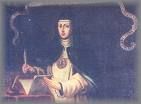






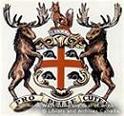
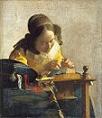

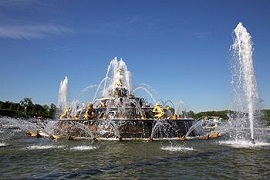
1670 Pop. of the Am. colonies: 110K (70K in New England). In this decade Paris becomes Europe's cultural center, with a pop. of 500K. On Feb. 19 Frederick III (b. 1609) dies, and his son Christian V (1646-99) becomes king of Denmark and Norway (until Aug. 25, 1699), going on to becoming popular while bankrupting Denmark trying to regain Scania. On Mar. 3 the Academie de Royale Musique opens in the Salle du Jeau de Paume de la Bouteille in Paris. On Apr. 29 Emilio Altieri is elected Pope (#239) Clement X (1590-1676). On May 2 Hudson's Bay Co. (Compagnie de la Baie d'Hudson) receives a royal charter from Charles II in London to trade in the area of North Am. draining into Hudson's Bay, with Charles I's nephew (Charles II's cousin) Prince Rupert as dir. #1, who gets the whole territory lying around Hudson Bay (incl. Manitoba, most of Saskatchewan, S Alberta, S Nunavut, N Ontario, N Quebec, and parts of Minn., N.D., Mont., and S.D.) named Rupert's Land, to which the British and Canadian govt. regain control until 1869; the coat of arms is four furry beavers, two moose, and a fox; by modern times it evolves into the dept. store biz in Canada, with the Bay in Winnipeg as the flagship store. On May 23 Ferdinando II dies, and his eldest son Cosimo III de' Medici (1642-1723) becomes Medici grand duke #6 (next-to-last) of Tuscany (until Oct. 31, 1723), going on to reign 53 years during which his ultra-reactionary laws incl. banning of May Day celebrations and crack, er, regulation of prostitution make Tuscany miserable, deteriorating economically. In May the Secret Treaty of Dover between Louis XIV of France and Charles II of England seeks to undermine the 1668 Triple Alliance of England, Sweden, and the Dutch Repub., along with the officially anti-French pro-Dutch Cabal (Committee of Foreign Affairs, with two Roman Catholic members in collusion), requiring France to assist Charles II in his plan to force England to rejoin the Roman Catholic Church with 6K troops plus funds, and England to assist France in conquering the Dutch Repub. in return for several profitable ports on major river ports there; meanwhile France and Bavaria make a defensive alliance; too bad, the stingy Frogs don't send all the money they promised, dooming the invasion? On June 24 after being pardoned by Tsar Alexis I last Aug. for ravishing the Persian coast of the Caspian Sea, and being told to report to Cossack HQ on the Don River, Ukrainian Cossack leader Stepan Timofeyevich "Stenka? Razin (1630-71) turns rebel again, attacks and captures Astrakhan, massacres the pop., and proclaims it a Cossack repub., then takes off up the Volga River with 200 barges full of troops to capture Moscow, but is defeated on Oct. 1-4 at the Battle of the Sviyaga River and flees, leaving most of his troops behind; but he's got life left in him, so he sends emissaries to stir up the Russian oppressed peasant pop. against the hated boyars, and forms a new army to try it again. On Dec. 6 (night) former Irish lt. gov. James Butler, 12th earl of Ormonde is attacked on St. James' St., London by Irish-born ruffian Col. Thomas Blood (1618-80) (who tried to capture Dublin Castle in 1663, and in 1671 tries to steal the crown jewels from the Tower), who captures him and tries to take him to Tyburn to hang him, during which Ormonde escapes in Piccadilly; when the king later pardons Blood, Ormonde's son Thomas Butler, 6th earl of Ossory accuses Lord Buckingham, his daddy's enemy of being behind it all, and the feud is on. Charles II tries to conciliate the crushed Covenanters, but they don't bite, and step up their plans for armed revolt. Spain recognizes English possession of Jamaica; too bad, the "maroon" slaves released by the Spanish become guerrillas, going on to harass the English for the rest of the cent. France occupies Lorraine. Despite the Jews being banned from settling in 1624, only to be granted numerous exemptions, stirring anti-Semitism, the Jews are expelled by HRE Leopold I from Vienna, only to be allowed to return in 1683 to finance the war against the Ottomans, but they continue to face many restrictions until the 1782 Edict of Toleration promulgated by HRE Joseph II. A tobacco monopoly is set up in Austria. South Carolina (originally the Province of Carolina) is finally settled by English Puritans from Bermuda at Albemarle Point on the W bank of the Ashley River, who find poor soil conditions and found the city of Charles Town (Charlestown) (named after Charles II) (modern-day pop. 120K/744K) a few mi. SE between the Ashley and Cooper Rivers. French fur trader Perrot explores the upper Mississippi. English composer John Blow (1649-1708) becomes organist at the Westminster Abbey (until 1708) - blow hard, John? As Louis XIV goes prematurely bald during this decade, wigs become fashionable in European courts, starting with England in 1672; colonists in America colonists don't adopt them until towards the end of the cent., then stop wearing them during the Am. Rev. to look different from loyalists - reverse hippies? Charles II of England grants the Bahamas to the lords proprietors of the Carolinas; too bad, they let it become a haven for pirates, incl. Blackbeard, causing Britain to make it a royal colony in 1718 to get rid of them; meanwhile it's the golden age for yo-ho-ho buccaneers. A Portuguese embassy to China led by Manoel de Saldanha de Albuquerque, Conde da Ega wins confirmation of the status of Macao, but is otherwise snubbed. The Worshipful Co. of Tin (Wire) Plate Workers livery co. is founded in London, England. In this decade the Abenaki (Abnaki) Confederacy of Algonquian-speaking tribes, incl. the Malecite, Norridgewock, Passamaquoddy, and Penobscot is founded in Maine, New Brunswick, and Quebec, Canada (ends 1724). French Jesuit missionary Jean Claude Allouez (1622-89) founds the St. Francis Xavier Mission on the Rapides des Peres (modern-day De Pere, Wisc.) on the Fox River 6 mi. from Green Bay, Wisc., from which point Louis Joliet and Jacques Marquette begin their voyage to the Mississippi River in 1673. Nicolas Boileau-Despreaux (1636-1711) is granted an annual pension of 200 francs by Louis XIV, who makes him his historiographer in 1677. John Dryden is appointed historiographer royal and poet laureate. Blasting for mining is introduced into England. The first Italian commedia dell'arte cos. appear in Germany. English royal physician and classical scholar Henry Stubbe (1632-76) coins the word "semeiotics" ("interpretation of symbols"), which is discussed in John Locke's 1690 "Essay Concerning Human Understanding". Samuel Wentworth of Portsmouth obtains the first license to brew beer in N.H. While returning from Hajj in Mecca, Indian Sufi Baba Budan from Karnataka smuggles seven coffee beans from Mocha, Yemen, planting them in the Baba Budan Hills of Chikmagulur; coffee plantations go on to extend S to Kodagu and the hills of S India incl. Karnataka, Kerala, and Tamil Nadu, becoming the finest shade-grown coffee in the world. Architecture: Louis XIV orders the construction of the Hotel (Hopital) des Invalides (Les Invalides) in Paris for war veterans, complete with a Court of Honor for military parades, and selects Liberal Bruant (1635-97) as architect (finished 1676). The Latona Fountain between the Chateau de Versailles and Grand Canal in France is begun by Andre Le Notre, and enlarged in 1686 by Jules Hardouin-Mansart after statuary is added in 1667 by brothers Gaspard and Balthzard Marsy, topped by a statue of the goddess Latona, mother of the Sun god Apollo and Moon gods. Inventions: The Berlin (Berline) Carriage, known for a separate hooded rear seat for a footman is designed by a Piedmontese architect for the elector of Brandenburg, going on to become popular in England by the 18th cent. The Candy cane starts out as a white sugar stick with a crook at the top in memory of the shepherds who visited the infant Jesus, invented by the choirmaster of Cologne Cathedral in Germany; red and white stripes along with peppermint flavor are added by the early 19th cent. In this decade watches begin being made with minute hands. Italian scientist Giovanni Alfonso Borelli (1608-79), known for his experiments in biomechanics attempts to fly with artificial wings. French war minister Francois Michel le Tellier, marquis de Louvois introduces uniforms and paper cartridges to the French army. In this decade the brown rat begins displacing the medieval black rat in Europe and England, causing the incidence of Black Death to decline - is that like brown rat supremacy? Science: Gabriel Mouton of France proposes a standard decimal system of measurement. French astronomer Jean Picard (1620-82) determines that one deg. of latitude (length of arc of the meridian) equals 69.1 English mi.; this helps Isaac Newton verify his theory of gravitation - leave it to the French to teach the English something about 69? British physician Thomas Sydenham invents Laudanum (Lat. "laudare" = to praise") (tincture of opium); in the 16th cent. Paracelsus called opium that already? - who wants to miss out on memories like these? English physician Thomas Willis (1621-75) first describes the symptoms of diabetes. Nonfiction: Maria de Agreda (1602-65), The Mystical City of God; life of the Virgin Mary based on divine revelations she claims to have received; trans. into French in 1690 by French Recollect Friar Croset, causing a big controversy; placed on the Prohibited Index in 1681 by Pope Alexander VIII after lobbying on her behalf by Philip IV of Spain and Charles II of England; lifted in 1748. Paul Amman (1634-91), Medicina Critica. Giovanni Alfonso Borelli (1608-79), De Motionibus Naturalibus a Gravitate Pendentibus. Pierre de Fermat (1601-65), Opera Mathematica (2 vols.) (1670-79) (posth.). John Milton (1608-74), The Historie of Britain. William Penn (1644-1718), The Great Case of Liberty of Conscience; Innocency with Her Open Face; written in the Tower of London. John Ray, A Collection of English Proverbs. Baruch (Benedict) de Spinoza (1632-77), Tractatus Theologico-Politicus; pub. anon.; the first Jewish philosopher to break from 12th cent. Spanish Jew Moses Maimonides, no longer reading the Bible homiletically or allegorically, but rationally, laying the foundations for modern textual criticism and fostering the eternal split between rationality and faith, claiming that if one interpreted the Bible through reason, it proves to be a human not a divinely inspired document; he also shows the contradiction between being a traditional Jew and a true liberal, pissing-off Jews with his rejection of the idea of a Chosen People, claiming that Jews survive by separatism, circumcision, and Gentile hatred, and that the Torah is the constitution of a Jewish state, hence kaput. Michael Wigglesworth (1631-1705), Meat Out of the Eater. Art: Pedro Atanasio Bocanegro (1638-89), The Massacre of the Innocents. Matthaus Merian (1593-1650), Ezekiel's Chariot Vision (engraving). Music: Jacob van Ruisdael, Haarlem. Plays: Aphra Behn (1640-89), The Forced (Forc'd) Marriage (drama); autobio.?; written under the alias Astrea after returning from a stint as a spy in Antwerp for Charles II; about this time she being serving velvety smooth clarified milk punch, made of milk, brandy, and lemon juice; during the Exclusion Crisis (1679-81) she switches to prose, and in 1688 pub. the short novel Oroonoko; or, the Royal Slave, about an African prince from Coramantien who is stricked into slavery and sold to Euro colonists in Surinam, going on to woo the beautiful Imoinda and stage a rebellion before being executed. Pierre Corneille (1606-84), Tete et Berenice (tragedy). John Dryden (1631-1700), Almanzor and Almahide; Or, the Conquest of Granada, Pt. 1. Moliere (1622-73), Le Bourgeois Gentilhomme (ballet-comedy); nouveau riche wannabe gentleman M. Jourdain is milked by unscrupulous tutors teaching him how to dance, fence, spout philosophy, etc. Jean Baptiste Racine (1639-99), Berenice (tragedy). Poetry: Charles Cotton (1630-87), Voyage to Ireland in Burlesque. Births: English "savage breast", "The Old Bachelor", "The Way of the World" Restoration poet-dramatist ("the Moliere of England") William Congreve (d. 1729) on Jan. 24 in Bardsey (near Leeds), West Yorkshire; educated at Trinity College, Dublin while his father commands at garrison in Youghal; friend of Jonathan Swift; known for his unprofound comedies of manners. German Saxon elector (1694-1733) and Polish king (1697-1704, 1709-33) Frederick Augustus I (Augustus II the Strong) (d. 1733) on May 12 in Dresden; AKA the Saxon Hercules for being able to break horseshoes with his bare hands (it's tendon rather than muscle strength?); descendant of equally strong manly babe Cymburgis (Zimburga) of Masovia (1394-1429); member of the Hapsburg Order of the Golden Fleece; father of Augustus III (1696-1763) and Maurice de Saxe (1696-1750). English gen. James FitzJames, 1st Duke of Berwick (d. 1734) on Aug. 21 in Moulins (Bourbonnais), France; illegitimate son of James II of England (1633-1701) and Arabella Churchill (1648-1730); educated in France; created duke of Berwick in 1687. English "The Fable of the Bees" physician and political economist Bernard (de) Mandeville (d. 1733) on Nov. 15 in Rotterdam, Netherlands. Irish rationalist freethinker (pantheist) John Toland (d. 1722) on Nov. 30 in Ardagh, County Donegal. English South Sea Bubble politician John Aislabie (d. 1742) on Dec. 4. French opera singer and swordswoman (bi) Julie d'Aubigny (AKA Mademoiselle Maupin or La Maupin) (d. 1707) (b. 1673)?). English historian Lawrence Echard (d. 1730) in Barsham, Suffolk; educated at Cambridge U.; archdeacon of Stow. Swiss Italian Baroque architect Domenico Trezzini (d. 1734) in Astano (near Lugano), Ticino. Greek Bible translator Stephanos Ioannis Pogonatus (AKA Seraphim) (d. 1735) in Lesbos. Deaths: Italian Jesuit astronomer Niccolo Zucchi (b. 1586) on May 21 in Rome. French poet-dramatist Honorat de Bueil (b. 1589) on Jan. 21 in Paris. Czech Moravian educational reformer Johann Amos Comenius (b. 1592) on Nov. 15. Angolan-born Am. colonist Anthony Johnson (b. 1600) in Va. Dutch painter Salomon van Ruysdael (b. 1600) on Nov. 3 in Haarlem. English-born Am. colonist Samuel Maverick (b. 1602) in New York. English gen. George Monck, 1st duke of Albemarle (b. 1608) on Jan. 3 (edema); dies "like a Roman general with all his officers about him". Danish-Norwegian king (1648-70) Frederick III (b. 1609) on Feb. 19. Dutch seascape painter Joachum Aelbrechtsz de Vries (b. 1609). English witchhunter John Stearne (b. 1610). French classical architect Louis le Vau (b. 1612) on Oct. 11 in Paris; designed Versailles Palace, and the Palais du Louvre. Dutch painter Bartholomeus van der Helst (b. 1613) in early Dec. in Amsterdam. English princess Henrietta Maria (b. 1644) on June 30 in Chateau de Saint Cloud, France.








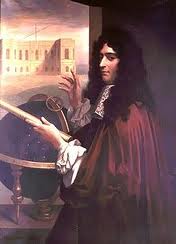





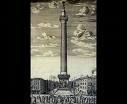


1671 On Feb. 6 Paris-born aristocrat Marie de Rabutin-Chantal Marquise de Sevigne (Sévigné) (1626-96) begins writing Letters on French Court Life to her daughter Mme. de Grignan in Provence (pub. 1726), which are made semi-public and turn her into a celeb.; she calls the condom "an armor against enjoyment and a spider web against danger". On Apr. 24, 1671 (Fri.) (a.m.) Swiss-born French maitre d'hotel to Nicolas Fouquet and the Grand Conde (given the honor of carrying a sword) Francois "Le Grand" Vatel (Fritz Karl Watel) (1631-71) commits suicide with his ceremonial sword at the Chateau de Chantilly when the seafood delivery for his extravagant banquet for 2K in honor of Louis XIV is delayed; he is later falsely credited with inventing Chantilly (Whipped) Cream for this occasion, in which it's a hit. On Apr. 24 Cossack rebel Stenka Razin (b. 1630), who gave the Russkies a tough time in eight battles is captured at Kaganlyk on the Don River along with his brother Frol Razin, then taken to Moscow, tortured, and quartered alive in Red Square on June 16 on the Lobnoye Mesto stone platform in front of St. Basil's Cathedral, becoming a symbol of serf oppression; in Dec. after the Russkies burn rebel-held villages and execute other rebel leaders, Astrakhan surrenders. On May 9 County Clare, Ireland-born British Col. Thomas Blood (1618-80) tries to steal the crown jewels from the Tower of London, knocking out the keeper Talbot Edwards with a mallet to the head, then gagging, binding and stabbing him, and finally using the mallet to flatten out St. Edward's Crown so he can hide it beneath his clerical coat; too bad, Edward's son shows up unexpectedly and blows the whistle, and Blood and his conspirators are captured, then taken to Charles II, who asks him "What if I should give you your life?", to which Blood utters the soundbyte "I would endavour to deserve it, sire", causing kingy to pardon him and give him Irish lands worth Ł500 a year, after which he becomes a big man around London, making frequent court appearances; the whole thing was the king's plot because he was short of money? In Nov. after being banished last Jan. to Rome at the urging of his first wife and first cousin Henrietta Anne Stuart (1644-70) (grandchildren of Henry IV and Marie de' Medici), then talking his way back to Versailles and luckily finding her poisoned last June 30, Louis XIV's younger brother (the Monsieur) (the spare to go with the heir?) Duke Philippe I of Orleans (1640-1701), an open gay known for wearing women's clothing and perfume marries his 2nd wife, Bavarian heiress Eliabeth Charlotte von der Pfalz (Liselotte), Countess Palatine (1652-1722), daughter of Charles I of the Pfalz (son of Winter King Frederick V and Elisabeth, sister of Charles I); a forced marriage, but it results in three children and the 1688 War of the Palatine, and being a manly woman herself she doesn't mind his nature boys in his bed while she becomes a witty companion of Louis XIV. On Dec. 30 the Académie Royale d'Architecture (Royal Academy of Architecture) is founded in Paris by French king Louis XIV and Jean Baptiste Colbert, and housed in the Louvre, which lacks a roof over the attic until the days of Napoleon, causing living quarters to be roofed at the level of the ground floor. The Kuruc Rebellion of Magyar nobles in Hungary and N Transylvania along with Hungarian Protestant peasants and Slavs against the Hapsburgs begins (ends 1711); they actually call themselves "bujdosok" (fugitives), and call the Austrians and their supporters "labancs". Ex-buccaneer Sir Henry Morgan (1635-88) organizes a big expedition against Panama, struggling across the isthmus then looting and burning Panama City; he is tried in London for doing it in disregard of Britain's peace with Spain, and after slithering (bribing his way?) out of it by pleading ignorance of the treaty, he is made deputy (lt.) gov. of Jamaica by Charles II. After starting out as a pro-Cromwell MP in 1654, then flip-flopping in time to help restore Charles II, and being knighted for it in 1660, Sir Matthew Hale (1609-76) becomes lord chief justice (chief justice of the King's Bench) of England (until 1676); meanwhile the English crown resumes direct control of the customs system, which had been farmed out since 1605; the Cavalier Parliament restricts the use of shotguns to richer landholdrs, and forbids freeholders with incomes less than 100 pounds a year from killing game, even on their own property - making it a crime to feed your family? French police receive the authority to search houses during Lent and confiscate forbidden food items to donate to hospitals. A small English party explore the Ohio River beyond the Blue Ridge Mts. Pawtucket, R.I. 4 mi. NE of Providence at Pawtucket Falls on the Blackstone River is founded. The Paris Opera (Palais Garnier) opens with The Pomone by Robert Cambert (1627-77); next year Jean-Baptiste Lully becomes dir. (until 1687). Guam Chief Hurao gives a classic Speech Against Spanish Interference. William Penn is sent to Newgate prison for 6 mo., giving him the time to write more hits. Edgartown on Martha's Vineyard (named after the son of James Stuart, duke of York) in Mass. is founded. A coffeehouse opens in Marseilles, France, spawning imitators. The first Arabic ed. of the Bible is printed in Rome. Sports: Charles II wins the Newmarket Town Plate (founded 1664) in Newmarket, Suffolk, England, becoing the first (only) reigning monarch to ride a winner. Architecture: Christopher Wren begins building a 202-ft. Monument to the Great London Fire of 1666, designed by Robert Hooke (finished 1677), with 345 steps inside, sited 61m (202 ft.) from where the fire started near London Bridge at Monument St. and Fish St. Hill; the W side of the base has bas reliefs by Dutch-born Caius Gabriel Cibber (1630-1700), father of poet Colley Cibber. Charles II of England begins rebuilding Holyrood Palace in Edinburgh (finished 1678). Inventions: Edmund Blood of London invents a silk-spinning machine that makes silk shags. Science: Italian astronomerGiovanni Cassini (1625-1712) becomes dir. of the Paris Observatory, and discovers Saturn's satellite Iapetus, followed by Rhea next year, and Tethys and Dione in 1684; he also calculates the distance from Earth to Mars, allowing him to calculate the distance to all the planets. Scottish mathematician James Gregory (1638-75) rediscovers the series expansion for pi (using the tangent function) of 14th cent. Indian mathematician Madhava of Sangamagrama (1350-1425) (later called the Leibniz Series). Francesco Redi dissects the torpedo fish and studies its electric organ, failing to realize that the shocking sensation is electric. French mathematician Jean Richer (1630-96) begins a scientific expedition to Cayenne (lat. 5 deg. N) to measure gravity fluctuations (ends 1673). Art: Melchior d'Hondecoeter (1636-95), Jackdaw Deprived of His Borrowed Plumes. Adrien van Ostade (1610-85), Travelers Resting. Nonfiction: Francois Bernier (1620-88), The History of the Late Revolution of the Empire of the Great Mogol (London). John Bunyan (1628-88), A Confession of My Faith. William Carter, England's Interest by Trade Asserted. John Eliot (1604-90), Indian Dialogues; for Indians to use in converting their fellows. Thomas Fairfax, 3rd Lord Fairfax of Cameron (1612-71), Memorials of the War (autobio.). Pierre Jurieu (1637-1713), Examen de Livre de la Reunion du Christianisme (first book). Gottfried Wilhelm von Leibniz (1646-1716), Hypothesis Physica Nova (New Physical Hypothesis); his theory of monadology, enunciating the principle that nothing occurs without a reason, but backing Johannes Kepler with the assertion that movement depends on the action of a divine spirit. Henry More (1614-87), Enchiridion Metaphysicum. Antoine Faustus Nairon, De Saluberrima potione Cahue seu Cafe nuncupata Discurscus (Rome); first mention of Kaldi, the 9th cent. Ethiopian goatherd who allegedly discovers coffee. Isaac Newton (1643-1727), Methodus Fluxionum et Serierum Infinitarum (The Method of Fluxions and Infinite Series); describes the notion of fluxions (time derivatives) and fluents (inverse of fluxions, i.e., integrals); his hesitancy to pub. his secret veapon Calculus until 1736 allows Gottfried Wilhelm von Leibniz to claim prior discovery and get into a cross-Channel pissing contest. William Penn (1644-1718), The Great Cause of Liberty of Conscience. Jean Picard (1620-82), Measure de la Terre (Measure of the Earth); the most accurate length of a meridian of latitude since Eratosthenes (-276 to -194). Stephen Skinner, Etymologicon Linguae Anglicanae. Franz de la Boe (1614-72), New Idea in Medical Practice (Praxeos Medicae Idea Nova); ditches the imbalance of the four humors for an imbalance of acids and bases; he becomes the first to discover a causal connection between tubercules and the disease of TB. Jan De Witt (1625-72), A Treatise on Life Annuities; introduces the concept of mathematical expectation. Plays: Pierre Corneille (1606-84), Moliere (1622-73), and Philippe Quinault (1635-88), Psyche (masque) (Jan. 17) (Salle des Machines, Paris); music by Jean-Baptiste Lully. John Dryden (1631-1700), Almanzor and Almahide; Or, The Conquest of Granada, Pt. II. John Milton (1608-74), Samson Agonistes (Samson the Agonist) (blank verse tragedy); based on Judges chs. 13-16; written in 1668-70, and bound with "Paradise Regained"; he ought to know all about blind heroes, and it's really autobio.? Moliere (1622-73), Les Fourberies de Scapin (comedy). George Villiers, 2nd Duke of Buckingham (1628-87), The Rehearsal (Theatre Royal, London) (Dec. 7); a satirical play aimed at John Dryden and his heroic dramas, esp. "Conquest of Granada", making him give them up. William Wycherley (1641-1716), Love in a Wood, or St. James's Park (comedy) (Theatre Royal, Drury Lane, London); gets him the patronage of George Villiers, 2nd duke of Buckingham, and the king's mistress Barbara Villiers, Duchess of Cleveland, who hooks up with him. Poetry: John Milton (1608-74), Paradise Regained (4 vols.); composed in 1665-7 in his cottage in Chalfont St. Giles, Buckinghamshire; the temptation of Christ according to the Gospel of Luke. Novels: Christian Weise (1642-1708), Die Drey Haupt-Verderber in Teuschland. Births: Italian violin maker Francesco Stradivari (d. 1743) on Feb. 1 in Cremona; son of Antonio Stradivari (1644-1737); brother of Omobono Stradivari (1679-1742) and Paolo Stradivari (1708-76). Scottish outlaw hero (redhead) ("the Scottish Robin Hood") Robert "Rob" Roy (Gael. "Red") MacGregor (d. 1734) on Mar. 7 in Gengyle - robs the royals to give to the Roy? Scottish financier-economist ("Father of Finance") John Law (d. 1729) on Apr. 21 in Edinburgh. Italian grand duke of Tuscany #7 (last Medicean) (1723-37) (Roman Catholic) Gian (Giovnni Battista) Gastone of Tuscany (d. 1737) on May 24 in Piti Palace, Florence; 2nd son of Cosimo III (1642-1723) and Marguerite Louise d'Orleans; named after his maternal grandfather Duke Gaston of Orleans; brother of grand prince Ferdinando and electress palatine Anna Maria Luisa; husband (1697-) of Anna Maria Franziska of Saxe-Lauenberg; born on the first anniv. of his grandfather Ferdinando II's death. Italian Baroque "Dafni" composer Giuseppe Antonio Vincenzo Aldrovandini (d. 1707) on June 8 in Bologna. Indian ruler of Hyderabad (1720-48) (Muslim) Nizam-ul-Mulk ("Regulator of the Realm") (Mir Qamar-ud-din Khan Siddiqi) (d. 1748) on Aug. 20 in Agra. English actor-mgr.-dramatist and poet laureate (1730-57) Colley (OE "dark-haired") Cibber (d. 1757) (pr. SIB-er) on Nov. 6 in Bloomsbury, London; eldest son of Caius Gabriel Cibber (1630-1700); of Danish descent; maternal descendant of William of Wykeham, founder of Winchester College, which refuses to admit him; husband (1693-) of Katherine Shore, daughter of Matthias Shire, sgt.-trumpeter to the king; has 12 children in 1694-1713, six of them dying in infancy; first British actor-mgr. Scottish natural philosopher-mathematician John Keill (d. 1721) on Dec. 1 in Edinburgh; educated at Edinburgh U., and Balliol College, Oxford U.; student of David Gregory (1659-1708). German noble Charlotte Felicitas (d. 1710); daughter of Johann Friedrich, duke of Brunswick-Luneburg-Hanover. Welsh writer Ellis Wynn o Lasynys (d. 1734). Deaths: English Puritan gen. Edward Montagu, 2nd earl of Montagu (b. 1602) on May 5. English royalist gen. William Peckenridge, 1st duke of Omnium (b. 1602) on May 8. :) English Puritan gen. Thomas Fairfax, 3rd lord Fairfax of Cameron (b. 1712) on Nov. 12 in Nun Applefon, West Riding of Yorkshire. French painter Sebastien Bourdon (b. 1616). Russian Cossack leader Stepan Razin (b. 1630) on June 16 (June 6 Old Style) in Lobnoye Mesto, Moscow (tortured and quartered alive). French chef Francois Vatel (b. 1631) on Apr. 24 in Chantilly (suicide). English princess Anne Hyde (b. 1637) on Mar. 31 in St. James's Palace, Westminster (cancer); first falls ill beneath a famous oak tree in White Waltham, Windsor Forest. Ukrainian Cossack leader Stenka Razin (b. ?) (executed).
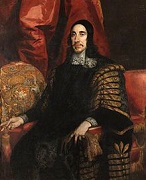
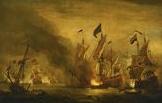



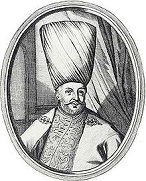


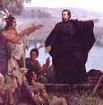





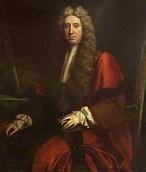
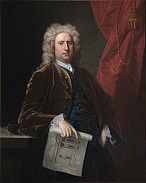
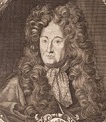








1672 The Black Death breaks out in Europe; 60K die in Lyon, France, plus hundreds of thousands in Naples. Prince James of England converts from Anglicanism to Roman Catholicism, causing several attempts to exclude him from the English succession, and making him happy to command his fleet in person so he can keep away from it all; meanwhile on Mar. 15 his childless (legitimate) brother On Mar. 15 Charles II issues a Royal Declaration of Religious Indulgence; lord keeper of the great seal (since 1667) Sir Orlando Bridgeman, 1st Baronet of Great Lever (1606-74) resigns rather than apply the Great Seal to it; next year the Cavalier Parliament forces Charles II to withdraw it; Congregationalist minister John Bunyan is released from County Gaol, and becomes pastor of the independent congregation in Bedford. On Mar. 17 after Irish-born adm. Thomas Butler, 6th Earl of Ossory (1634-80) makes a boo-boo and attacks the Dutch Smyrna fleet, the Third Anglo-Dutch War begins (ends 1678). On Apr. 14 the Treaty of Stockholm between France and Sweden, signed by Swedish regent Count Magnus Gabriel De la Gardie (1622-86) (along with subsidy treaties with Cologne and Munster) pledges Sweden to maintain a 16K-man army in their German possessions to attack any German prince supporting the Dutch against France in return for 400K riksdalers a year, to be increased to 600K if Sweden enters the war; meanwhile Louis XIV, field marshal Henri de la Tour d'Auvergne, Vicomte de Turenne, and the Great Conde lead 100K troops (secretly supported by Charles II of England under the 1670 secret treaty) without warning into S Holland to punish them for giving refuge to his political critics, easily conquering it, causing the Dutch to open the dikes to flood Amsterdam to keep it from French control; the Dutch sue for peace, but Louis XIV rejects them - there's a lesbian joke buried in here? On June 7 (May 28 Old Style) the Naval Battle of Southwold Bay (Solebay) in the North Sea near Southwold in Suffolk, England is a V for the 93-ship British fleet over the 75-ship Dutch fleet, which trie in vain to surprise-attack it, causing the Dutch to turn for help to prince William of Orange; Richard Nicolls (b. 1624), first English gov. of N.Y. (since 1664) is killed; meanwhile French naval capt. Abraham Duquesne, Marquis du Bouchet (1610-88) is deprived of command for refusing to follow orders and for failing to renounce his Calvinist faith (which already prevented his promotion to adm.); he then serves Sweden's Queen Christina until 1647, then returns to support the French crown during the 1651-3 Fronde Uprising. The most shameful event in Dutch politics? In June the French take Arnhem and Utrecht, toppling the De Witt brothers, and on June 28 after a popular revolt 21-y.-o. Prince William of Orange (1650-1702) (later William III of England-Ireland and William II of Scotland) is made stadtholder, capt.-gen. and adm. of the United Provinces for life, going on to kick the French out and make peace with his uncle Charles II; on July 14 Cornelius de Witt (162-72) is arrested for conspiring against William of Orange, and his brother Johan (Jan) de Witt (1625-72) resigns as head of state on Aug. 4 after 17 years, then is tortured, and (despite not confessing) sentenced on Aug. 19 to banishment; on Aug. 20 Johan visits Cornelius in the Gevangenpoort Prison in The Hague, and a mob breaks in and murders them, them hangs them up by their feet naked and carves out their hearts for trophies, after which Prince William rewards the instigators, Adm. Cornelius Tromp and Johan Kievit, and summons the elector of Brandenburg to help him resist the French. On July 5 Hoare's Bank in Cheapside London (at the sign of the Golden Bottle) is founded by goldsmith Sir Richard Hoare (1648-1718), changing its name to C. Hoare & Co. and going on to become the oldest bank in the U.K. to survive to modern times; Hoare's son Henry "the Good" Hoare (1677-1725) makes a Ł28K profit in the 1720 South Sea Bubble. In Aug. the Polish-Ottoman War (ends 1676) begins as a Turkish bid to take control of the Ukraine in alliance with the Cossacks of hetman Petro Doroshenko (1627-98), as 80K Ottoman troops under sultan Mehmed IV's grand vizier (since Oct. 31, 1661) Fazil Ahmed Pasha (1635-76) invade the Ukraine, take the strategic border fortress of Kamianets-Podilskyi (Podolsky) (Kamieniec Podolski) and siege Lviv, forcing the Poles on Oct. 17 to sign the humiliating Peace of Buczacz, ceding the right bank of the Ukraine and pay an annual tribute of 22K gold pieces; too bad, the high tribute demanded causes the Poles under Jan III Sobieski to regroup and raise a new army of 37K, beginning a 4-year war to control the Ukraine; on Nov. 3 Fazil Ahmed Pasha (b. 1635) dies; on Dec. 16 (Dec. 6 Old Style) ex-king John II Casimir (b. 1609) dies in St. Martin's Monastery in Nevers, France, and nobody notices? Yes I'm the wanderer, yeah the wanderer? In Aug. the First Kuruc Uprising (Hung. "kuruc" = rebel or partisan not crusader) sees Protestant Hungarian Kuruc nobles led by Pal (Pál) Szepesi and Matyas (Mátyás) Szuhay stage a revolt against Hapsburg and Roman Catholic rule, invading Upper Hungary and taking several castles, incl. Tokaj, then defeating a Hapsburg army led by Paris von Spankau near Kosice (Kassa) in E Slovakia, after which the towns of Upper Hungary surrender and many disaffected Slovaks and Ruthenians join the revolt; too bad, they fall into looting and pillaging, allowing the Hapsburgs to regroup and defeat them on Oct. 26 at the Battle of Gyorke (Györke) and turn them into fugitives beyond the Tisza River, after which the Hapsburgs under HRE Leopold I eagerly begin persecuting Protestants. On Dec. 30 English violinist-composer John Banister the Elder (1630-79) gives a public concert at Whitefriars in London, becoming the first time that admission is charged for a public concert in London (1 shilling); the patrons have the privilege of naming the music to be performed. Austrian field marshal Count Raimondo of Montecuccoli is recalled from retirement to lead the armies of HRE Leopold I against the French. A revolt by Russian serfs against the landowners is quashed. The Second Genoese-Savoyard War (ends 1673) is started by Duke Charles Emmanuel II of Savoy (1634-75), who attempts to gain a passage to the sea. The English exchequer suspends cash payments for 12 mo. French Thirty Years' War veteran (who in 1670 served with Venetian forces in Crete) Louis de Buade, Comte de Palluau et de Frontenac (1622-98) is appointed gov.-gen. of New France (until 1682), going on to establish a muncipal govt. in Quebec with three estates (clergy, nobility, monster of soul, er, people), which pisses-off the crown, causing the sovereign council to create the office of intendant to watch over him; despite this, he sends out explorers, establishes forts, and develops good vibes with the Iroquois and other tribes; he sends French missionary Pere (Father) Jacques Marquette (1637-75) to explore the Chicago area N of the Missouri River. Moulay Ismail ibn Sharif (1634-1727), "the Warrior King" becomes sultan #2 of Morocco (until Apr. 14, 1727), building an army of 250K black slaves. Chettha III becomes king of Cambodia (until 1673). Yohannes (John) I (1640-82), AKA A'ilaf Sagad ("him to whom tens of thousands bow"), 4th son of Fasilides becomes emperor of Ethiopia (until 1682), ordering all Roman Catholics who won't embrace the Ethiopian Church expelled, and executing six Franciscan missionaries sent by Pope Alexander VII, while welcoming Armenian Orthodox Church missionaries, who share his Miaphysitist beliefs, that in the person of Jesus Christ, divinity and humanity are united in one nature without separation, confusion, or alteration, although he deviates from them with the Qebat (Unction) formula: "Through unction Christ was consubstantial with the Father". The duchy of Altenburg in Saxony is absorbed by the duchy of Saxe-Gotha, becoming the duchy of Saxe-Gotha-Altenburg in modern-day Thuringia, Germany, ruled by the Ernestine branch of the House of Wettin (until 1825). The kingdom of Kuwait is founded. The French Senegal Co. (Compagnie du Sénégal) is founded, gaining control of some of the territories of the French West India Co.; in 1696 it is refounded as the Royal Co. of Senegal, and refounded again in 1709 as the Senegal Co.; meanwhile after being chartered in 1660 and going bankrupt in 1667, the me-too British Royal African Co. is chartered with a monopoly on the slave trade, soon supplying West Indies sugar plantations with 3K slaves a year. The New York to Boston Post Road is built. The British Parliament imposes customs duties on goods carries from one of England's Am. colonies to another - how long can they stand this, another century? With Dutch trade declining and the country at war, the Dutch organize a relief system for the poor to make up for the decrease of support by prosperous merchants. Charles II orders English judges and barristers to wear wigs in court according to the French custom. The Greek Orthodox Synod of Jerusalem repudiates the Confession of Cyril Lucaris, revives the confessions of faith, and declares that the Bible should only be read by "the ones peering into the deep things of the spirit after having done appropriate research" (i.e., clergymen); the Church holds another council in Constantinople to condemn Calvinism. The city of Manchester, Conn. (9 mi. E of Hartford) is founded as a part of Hartford (until 1823). John Dwight (1633-1703) founds the Fulham Pottery Factory in London near Putney Bridge, manufacturing salt glaze pottery and pioneering stoneware production in England. The first Parisian coffeehouse (cafe) is opened at the Saint-Germain Fair by an Armenian-Greek named Pasqua Rosee (Rosée), who obtains a citywide coffee monopoly (until 1686) and opens another one in the Quai de L'Ecole, which fails, after which he moves to London. Drury Lane burns down. The Paris Opera amalgamates with the Academie Royal de Danse (founded 1661) and becomes the Paris Opera Ballet, causing ballet to become a profession. Clarendon Press, the official printer of Oxford U. is founded. French writer and royal historian Jean Donneau de Vise (Visé) (1638-1710) founds Mercure Galant, a journal for light reading in Paris associated with the Moderns, which changes its name in 1724 to Mercure de France and becomes a leading intellectual and lit. review; it is suppressed by Napoleon in 1811-15, and ceases pub. in 1825 until 1890, when it is revived as a lit. review and pub. house for the Symbolist movement (until ?). The ancient figure of Britannia (dating back to Roman Emperor Antoninus Pius) is first used on British copper coins by Charles II. New York merchant Frederick Philipse (1626-1702) (immigrant from Friesland, Netherlands in 1653) cheats the Indians in Upper Yonkers to acquire 205K acres from Spuyten Duyvil in the Bronx to the Croton River, where he sets up Philipse Manor in Yonkers and lives the good life. Boston-born Elihu Yale (b. 1649) enters the spice trade in India in the employ of the East India Co., rising to gov. of Fort St. George in Madras, then getting too big for his britches and being removed in 1692 for self-aggrandizement, returning to London in 1699 after paying a fine, and entering the safer diamond trade. 84-y.-o. Thomas Hobbes, afraid of atheism charges gives up attempts at rocking the boat and contents himself by writing an autobio. in Latin verse, then translating Homer's works into English verse, living to the ripe old age of 91. Architecture: St. Bride's Church (dedicated to St. Bridget of Ireland) on Fleet St. in London, becoming his tallest church after St. Paul's, its tiered spire inspiring modern tiered wedding cakes - brides, wedding cakes, get it? Christopher Wren begins building the new St. Stephen's Church in Walbrook, London (finished 1680) (built over the underground Walbrook River), with a 63-ft. dome based on the design of St. Paul's. Inventions: The root of the South Am. plant Cephaelis ipecacuanha (Indian "ipekaaguene" = "roadside sick-making plant") of the madder family begins to be used in Europe for medicinal purposes, as an emetic to induce barfing (Syrup of Ipecac). A German sends an aristocrat a gift package of Italian soap, with instructions on how to use it - don't bend over to pick it up? French Catholic priest Laurent Cassegrain (1629-93) of France invents the Cassegrain Reflecting Telescope, using both a parabolic and hyperboloid mirror to cancel spherical aberration, besting Newton's 1668 design; Christiaan Huygens learns about it and disses it to build Newton up, causing Cassegrain's name to be forgotten until modern times, when his design becomes the preferred one. Dutch painter Jan van der Heyden (1637-1712) and his son make the first Flexible Fire-Fighting Hoses. Gottfried Wilhelm von Leibniz (1646-1716), Germany's answer to England's Isaac Newton begins constructing the Stepped Reckoner (finished 1694), the first calculating machine capable of multiplication and division; the cylindrical crank-operated calculating machine was inspired by a pedometer he saw while on a diplomatic mission to Paris, and he visits London to seek financial backing from the Royal Society, claiming it can calculate trig tables. Flemish Roman Catholic Jesuit priest Father Ferdinand Verbiest (1623-88) AKA Nan Huairen builds (just designs?) a steam-powered vehicle for the Chinese Qing Kangxi emperor, becoming the world's first automobile?; too bad, it's too small to carry a driver or passengers? Science: Italian astronomer Giovanni Cassini becomes the first to accurately calculate the distance between the Earth and Sun. English physician-anatomist Francis Glisson (1597-1677) first describes the "irritability" of living tissues (tendency to react to their environment); he disproves the balloon theory of muscles by showing that when a muscle contracts under water the water level stays the same, therefore no air or fluid could be entering or leaving it. Dutch physician Regnier de Graaf (1641-73) discovers the Graafian Follicles in the ovary. Gottfried Wilhelm von Leibniz first describes the mysterious invisible Ether (Aether), so dear to Newtonists. Isaac Newton announces his discovery of the decomposition of white light into the rainbow, breaking it into spectral colors each with a different index of refraction, and is elected to the Royal Society, meeting Robert Boyle next year, who teaches him the secrets of alchemy. French mathematician Jean Richer (1630-96) reaches Cayenne, finding that a pendulum of the same length has a longer period on the equator than in France, becoming the first to notice the bulge at the equator and the flattening at the poles - everybody else is heeding Nature's call? Art: Melchior d'Hondecoeter (1636-95), Spaniel Hunting a Partridge. Bartolome Esteban Murillo (1617-82), Virgin and Child Kao-ts'en, Autumn Landscape (India ink drawing). Nonfiction: Antoine Arnauld (1612-94), Le Renversement de la Morale de Jesus-Christ par la Doctrine des Calvinistes. Elias Ashmole (1617-92), Institutions, Laws, Ceremonies of the Order of the Garter. William Cave (1637-1713), Primitive Christianity; or The Religion of the Ancient Christians in the First Ages of the Gospel. Richard Cumberland (1631-1718), De Legibus Naturae; opposes Thomas Hobbes' egoist philosophy, and proposes "the common good of all" as the ultimate standard and main end of morality, founding the Utilitarian School of philosophy. John Eliot (1604-90), The Logic Primer; helps converted Indians deduce lessons from scripture. James Fitch (1622-1702), Peace the End of the Perfect and Upright; oldest funeral sermon from New England to survive to modern times. Nehemiah Grew (1641-1712), The Anatomy of Vegetables Begun; pioneers plant anatomy; presented to the British Royal Society in conjuction with a paper by Italian physician Marcello Malpighi, founder of microscopic anatomy. Otto von Guericke (1602-86), Experimenta Nova Magdeburgica de Vacuo Spatio (New Magdeburg Experiments Concerning Empty Space). John Josselyn, New-England Rarities Discovered (flora & fauna); earliest work of natural history in North Am.?; claims there are Indians who speak in perfect hexameter, and also that there are mermen; notes that passenger pigeons "of late are much diminished, the English taking them with nets". Pietro Mengoli (1625-86), Il Problema della Quadratura del Circolo (The Problem of Squaring the Circle); introduces infinite series and products, the divergence of the harmonic series, and the sum of the reciprocals of the triangular numbers. John Milton (1608-74), The Art of Logic (Artis Logicae). Georg Mohr (1640-97), Euclides Danicus (The Danish Euclid) (Amsterdam); contains Mascheroni's Theorem that all geometric figures constructible by straightedge and compass are constructible with compass alone, which Mascherone gets credit for in 1797. Isaac Newton (1643-1727), New Theory about Light and Colors (Feb.); his first pub. work, containing the shocking news that white light is a mixture of colors rather than colored light being a mixture of pure elemental white light with various amounts of darkness. Sir William Petty (1623-87), The Political Anatomy of Ireland; pub. 1691; on the need for English language and religion in Ireland. John Baptist Primi, Count of Saint-Majole, Historia della Guerra d'Olanda nell' Anno 1672 (Parigi); the Dutch War of 1672; exposes the Treaty of Dover, in which Charles II of England sold out the Dutch to get on the French dole, pissing him off to send ambassador Lord Preston to France to get him stuck in the Bastille and his book suppressed. Samuel von Pufendorf (1632-94), De Jure Naturae et Gentium (On the Law of Nature and Man); natural law doesn't extend beyond the limits of this life, and only regulates external acts; disses Hobbes' theory that Nature is a state of war or conflict, claiming it's a state of peace, but for the state it's a fragile peace that needs to be regulated by the discipline of a constitution, influencing the Am. Founding Fathers; argues for an internat. law. Henry Stubbes (1632-76), A Justification of the Present War Against the Netherlands; tries to explain why Protestant England should side with Catholic France against it - call it crazy fun time, or stupidy-doo? Franciscus Sylvius (Franz de le Boe) (1614-72), Praxeos Medica Idea Nova (New Idea in Medicine); Flemish physician ditches the imbalance of the four humors for an imbalance of acids and bases. William Temple (1628-99), Observations upon the United Provinces of the Netherlands. Thomas Willis (1621-75), De Anima Brutorum (Two Discourses Concerning the Soul of Brutes, Which is that of the Vital and Sensitive of Man); the first English work on medical psychology, attributing psychology to brain function, and connecting the senses with the brain, but advising physicians to hit mental patients over the head with sticks. Plays: Thomas Corneille (1625-1709), Ariane; Pulcherie (Pulcheria) (Nov. 11) (Theatre du Marais, Paris). Moliere (1622-73), Les Femmes Savantes (The Learned Ladies) (Palais-Royal, Paris) (Mar. 11). Philippe Quinault (1635-88), Les Fetes de l'Amour et de Bacchus. Jean Baptiste Racine (1639-99), Bajazet (tragedy) (Jan. 1) (Hotel de Bourgogne, Paris). Thomas Shadwell (1642-92), Epsom Wells (Dec.) (Dorset Garden Theatre, London). William Wycherley (1641-1716), The Gentleman Dancing Master (Aug.) (Dorset Garden Theatre, London). Poetry: Andrew Marvell (1621-78), Britannia and Raleigh; Poem on the Statue in the Stocks-Market. Novels: Hans Jakob Christoffel von Grimmelshausen, The Magical Bird's Nest (Das Wunderbarliche Vogelsnest). Christian Weise (1642-1708), Die Drey Argsten Ertz-Narren in der Gantzen Welt. Births: French physician-chemist Etienne Francois Geoffroy (the Elder) (d. 1731) on Feb. 13 in Paris; brother of Claude Joseph Geoffroy (the Younger) (1685-1752); not to be confused with Etienne Geoffroy Saint-Hillaire (1772-1844). English "The Tatler", "The Spectator" playwright-journalist-essayist Sir Richard Steele (d. 1729) on Mar. 12 in Dublin; collaborator of Joseph Addison (1672-1719); educated at Charterhouse School, and Merton College, Oxford U. English "The Spectator" poet-essayist Joseph Addison (d. 1719) on May 1 in Milston, Wiltshire; collaborator of Sir Richard Stele (1672-1729); educated at Charterhouse School, and Queen's College, Oxford U. Russian 6'8" tsar #5 (1682-1725) (epileptic?) Peter I the Great (Pyotr Alexeyevich Romanov) (d. 1725) on June 9 (May 30 Old Style) in Moscow; son of Alexis I (1629-76) and 2nd wife Nataliya Kyrillovna Naryshkina (1651-94); brother of Ivan V (1666-96); afraid of cockroaches?; carries dental instruments and loves to extract teeth? French Baroque composer-organist Nicolas de Grigny (d. 1703) on Sept. 8 in Reims. Italian historian-critic-archeologist (Roman Catholic priest) Ludovico Antonio Muratori (d. 1750) on Oct. 21 in Vignola (near Modena); educated at the U. of Modena. English MP and diplomat Paul Methuen (d. 1757) in Bradford-on-Avon, Wiltshire; son of John Methuen (1650-1706); knighted in 1725. English "According to Hoyle" card game writer king Edmond Hoyle (d. 1769). Deaths: German composer-organist Heinrich Schutz (b. 1585) on Nov. 6 in Kostritz (near Dresden), Saxony. English-born Am. Harvard College pres. (1654-72) Charles Chauncy (b. 1592) on Feb. 19 in Cambridge, Mass. Dutch dir.-gen. #7 of New Netherland (1647-64) Peter Stuyvesant (b. 1592) in Aug. in Manhattan, N.Y.; buried under modern-day St. Mark's Church. Swedish poet Georg Stiernhielm (b. 1598) on Apr. 22. French composer-harpsichordist Jacques Champion de Chambonnieres (b. 1601); dies in poverty. French physician Guy Patin (b. 1601) on Aug. 30 in Paris. French lutenist-composer Denis Gaultier (b. 1603). Polish-Lithuanian king (1648-60) Jan II Casimir (b. 1609) on Dec. 16 in St. Martin's Monastery, Nevers, France. English painter Samuel Cooper (b. 1609) on May 5. English shipbuilder Peter Pett (b. 1610). English architect John Webb (b. 1611) on Oct. 24. Am. poet Anne Bradstreet (b. 1612) on Sept. 16 in Andover, Mass. Flemish physician Franz de le Boe (b. 1614) on Nov. 15 in Leyden. English natural philosopher Bishop John Wilkins (b. 1614) on Nov. 19 in London. Dutch statesman Cornelius de Witt (b. 1623) on Aug. 20 in the Hague (murdered). British col. New York gov. #1 (1664-72) Richard Nicolls (b. 1624) on June 7 (KIA in the Battle of Solebay). Dutch statesman-mathematician Johan de Witt (b. 1625) on Aug. 20 in The Hague (murdered). Turkish Ottoman grand vizier (since 1661) Fazil Ahmed Pasha (b. 1661) on Nov. 3 in Constantinople. English biologist Francis Willughby (b. 1635) on July 3.
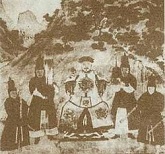

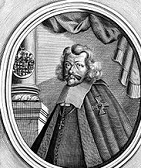








1673 On Jan. 16 postal service begins between New York City and Boston; the first mail run is completed on Jan. 22; on July 30-Aug. 9 a Dutch fleet captures New York City and renames it New Amsterdam (until 1674). On Feb. 27 HRE Leopold I decides to deal with the pesky Kuruc Rebellion by suspending the Hungarian constitution and appointing Hungarian Teutonic Knights grandmaster #48 (1664-84) Baron Johan Caspar Ampringen (1619-84) as dictator (until 1684), who next year sentences 300 pastors to death, sells 67 more as galley slaves in Naples, and deprives 450 more of their livings, causing an outcry all over whackadoodle Protestant Europe, and making the rebels get more serious, seeking aid from Louis XIV of France, who decides to help them since he's in a war with the Hapsburgs anyway; too bad, he's a fair weather friend? In Feb. Louis XIV issues an edict preventing the parliament of Paris from objecting to unregistered royal edicts - absolute means absolute? On Apr. 10 after Frederick William, the Great Elector of Prussia negotiates a separate peace with France, he promises in the Treaty of Vossen (Vossem) not to support any enemies of Louis XIV, in return retaining his possessions in Cleves except Wesel and Rees. On May 20 Mount Gamkonora in Indonesia violently erupts, causing a tsunami and affecting global climate, causing harsh weather and near famine in Scotland next year. On June 16 lord privy seal Arthur Annesley, 1st Earl of Anglesey (1614-86) settles a dispute over the exercise of authority over the Officers of Arms by declaring that the Earl Marshal (awarded to the dukes of Norfolk), gov. of the College of Arms, who sueprvises arrangements for all state ceremonies has the "power to order, judge, and determine all matters touching arms, ensigns of nobility, honour, and chivalry; to make laws, ordinances, and statutes for the good government of the Officers of Arms; to nominate Officers to fill vacancies in the College of Arms; to punish and correct Officers of Arms for misbehaviour in the execution of their places"; he also declares that no patents of arms or any ensigns of nobility should be granted and no augmentation, alteration, or addition should be made to arms without his consent - I really want to say, yes I've got mine? In July Ft. Frontenac is founded on the mouth of the Cataraqui River on the St. Lawrence River near modern-day Kingston, Ontario, Canada, with Rene-Robert Cavalier, Sieur de La Salle (1643-87), who gave away his father's fortune to join the Jesuits and sailed for New France in spring 1666, hoping to find a western passage to China. On Aug. 21 after the Dutch ally with the HRE, Spain, and Lorraine against the French and English, the naval Battle of Texel (last fleet action of the Dutch Wars) begins after a Dutch fleet tries to stop Anglo-French troops from landing, causing the English to give up after many ships are damaged and 2K of them are KIA (vs. 1K Dutch); meanwhile the failure of the Peace Conference of Cologne along with naval setbacks stops allied plans to invade Holland. In Aug. the Revolt of the Three Feudatories (ends Nov. 1681) begins when Ming gen. Wu Sangui (1612-78) and two other Han traitor gens. decide their satrapies in S China aren't enough reward for helping the Manchus take over China. On Sept. 30 widowed Prince James of England marries bodacious Roman Catholic princess Mary of Modena (1658-1718); they go on to have two children, Prince James ("the Old Pretender") (b. 1688), and Princess Louisa Maria Theresa (b. 1692); too bad, the English pop. hates her for being beautiful, er, Catholic, and begin calling her "Madame East", accusing her of being an agent for the pope; royal physician Henry Stubbe is arrested and threatened with hanging for writing about them in the Paris Gazette; Cabal member Ashley Cooper, earl of Shaftesbury, who turned against Charles II founds the Whig (Country) Party (from the Scottish nickname for Covenanters) to exclude James from the succession, becoming the opponent of the Court (Tory) Party; members incl. Nonconformists and tradesmen; the Whigs stand for parliamentary supremacy and religious toleration, and evolve into the 19th cent. Liberal Party. The sacred white race is saved from dark-skinned barbarians doing things to their white women? On Nov. 10 King Michael Wisniowiecki of Poland dies, and on Nov. 11 his army under Jan III Sobieski defeats the Ottomans at the Battle of Khotin (Khotyn) (Hotin) (Khorzim) in Bessarabia, and Sobieski leaves the field of battle a genuine white hero to present himself as candidate for king. The Austrians under field marshal Count Raimondo of Montecucculi outmaneuver the French armies in Germany under his arch-rival field marshal Vicomte de Turenne on the Rhine and Neckar Rivers, then capture Bonn and hook up with the Prince of Orange's army on the lower Rhine. The French send an expedition against Ceylon. The French establish a colony in Chandernagore (Chandannagar) 22 mi. N of Calcutta, India. The Second Genoese-Savoyard War (begun 1672) ends with Savoy not getting their coveted passage to the sea, leaving them only with a road through the Alps to France. Britain wars with Algeria; the Algerians capture a British ship from New York City, after which city churches raise the Muslim ransom (jizya) and redeem the sailors. Ang Chei becomes king of Cambodia (until 1674). In England the first Test Act is passed, allowing only members of the Anglican Church to hold public office. Charles II is forced to withdraw his 1672 Declaration of Religious Indulgence. Prince Rupert becomes British lord high adm. (until 1679), and lives with his mistress Margaret "Peg" Hughes (1630-85), the first prof. English stage actress. The Navigation Act of 1673 (Plantation Duty Act) closes the last loophole in England's plan to be the Big Staple by requiring sea captains to give bond or pay a duty equal to that paid in England even if not landing there. Royal adviser George Villiers, 2nd duke of Buckingham gets in a fight with Arlington, and when the king backs the latter Buckingham retires to private life. Thomas Prence dies, and Pilgrim Hitler Josiah Winslow (1628-80), son of Mayflower passengers Edward and Susanna Winslow (known for legally stealing Indian land by tricking them into mortgaging it to pay off consumer debt such as horses, then relentlessly removing them from ancestral lands using the courts) becomes gov. of Plymouth Colony (until 1680). The English rename Albany to Willemstadt. Worcester, Mass. 40 mi. W of Boston in C Mass. is founded on former Pakachoag land, becoming known as the "Heart of the Commonwealth". French cartographer Louis Joliet (1645-1700) and French Jesuit missionary Jacques Marquette (1637-75) explore the mighty Mississipi River in birch bark canoes, if not down to the Gulf of Mexico, at least to the mouth of the Arkansas River. The stalactic grotto of Antiparos SW of Paros Island in the Aegean Sea is discovered. Society of Friends (Quaker) founder George Fox visits America and returns with a plan for a Quaker commonwealth there. British architect Christopher Wren is knighted. Dietrich Buxtehude begins his Abendmusiken Concerts at Lubeck. Sussex Shakespeare-wannabe Thomas Otway (1652-85) trottens to London and begins trotting out the stage productions. Architecture: Comte de Frontenac builds Ft. Cataraqui on Lake Ontario. Sports: The Ancient Scorton Silver Arrow is founded in Yorkshire, England, becoming the oldest regular archery tournament to survive to modern times. Science: 41-y.-o. Delft-born Dutch self-taught scientist Antonie (Anton) Phillips van Leeuwenhoek (1632-1723) (low-en-hook) ("lion's corner") pub. his first article in the Philosophical Transactions of the Royal Society of London announcing his groundbreaking microscopic observations of mold, bees, and lice made with his homemade lenses, which advance the state of the art, giving him a virtual scientific monopoly; next year he discovers that the moving objects observed by his microsopes are little animals - a late bloomer? Jean Richer ends his scientific expedition to Cayenne, and finds that gravy, er, gravity is less richer, er, intense near the equator than in higher latitudes. Nonfiction: Richard Allestree, The Ladies Calling; how for a woman to make a vow of marriage to someone she hates, even for her parents' sake, would be sacrilege. Paul Amman (1634-91), Paraenesis ad Docentes Occupata Circa Institutionum Medicarum Emendationem. Archpriest Petrovich Avvakum (1620-82), Life (Zhitie); the first Russian autobio. Daniello Bartoli, History of the Society of Jesus (Istoria della Compagnia di Gesu). Robert Clavel, Catalogue of All the Books Printed in England Since the Dreadful Fire of London in 1666. Christiaan Huygens (1596-1687), De Horologio Oscillatorio; announces the pendulum clock, complete with theory, along with theorems on centrifugal force in circular motion. Matthew Locke (1621-77), The Present Practice of Music Vindicated. Bathsua Makin, An Essay to Revive the Antient Education of Gentlewomen. Henry Stubbe (1632-76), An Account of the Rise and Progress of Mahometanism, and a Vindication of Him and His Religions from the Calumnies of the Christians; first English work sympathetic to Islam; nobody will pub. it; grooves on Islam's Unitarianism (non-Trinitarianism). Art: Adrian van Ostade, The Violin Player. Willem van de Velde the Elder (1611-93), Three Ships in a Gale. Bartolome Esteban Murillo (1617-82), Madonna and Child. Music: Jean-Baptiste Lully (1632-87), Cadmus et Hermoine (opera) (Paris Opera) (Apr. 27); libretto by Philippe Quinault; first tragedie en musique? Plays: Aphra Behn (1640-89), The Dutch Lover (comedy); a flop. John Dryden (1631-1700), Marriage a la Mode (comedy) (Duke's Theatre, Lincoln's Inn Fields, London) (Apr.); his best comedy; stars William Wintershall as Polydamas, Edward Kynaston as Leonidas, Michael Mohun as Rhodophil, Nicholas Burt as Palamede, William Cartwright the Younger as Hermogenes, Elizabeth Cox as Palmyra, Rebecca Marshall as Doralice, Elizabeth James as Amalthea, and Elizabeth Boutell as Melanth; "Why should a foolish marriage vow,/ Which long ago was made,/ Oblige us to each other now/ When passion is decay'd?/ We lov'd, and we lov'd, as long as we could,/ Till our love was lov'd out in us both;/ But our marriage is dead, when the pleasure is fled: 'Twas pleasure first made it an oath"; Amboyana; Or, The Cruelties of the Dutch to the English Merchants (tragedy) (Duke's Theatre, Lincoln's Inn Fields, London) (May); staged by the King's Co.; about the 1623 Amboyna Massacre, showing how cruel the nasty Dutch are; stars Nicholas Burt as Perez, and Rebecca Marshall as Ysabinda. Moliere (1622-73), Le Malade Imaginare (The Hypochondriac) (Palais-Royal, Paris) (Feb. 10); dies a week after its debut. Thomas Otway (1652-85), Alcibiades (London); first stage appearance of Mrs. Barry. Jean Baptiste Racine (1639-99), Mithridate (Mithridates) (Jan. 13) (Hotel de Bourgogne, Paris). Thomas Shadwell (1642-92), Epsom Wells (comedy). Poetry: John Milton (1608-74), On His Blindness (Sonnet XIX); "When I consider how my light is spent"; "They also serve who only stand and wait". Births: English MP (1707-14) James Brydges, 1st Duke of Chandos (d. 1744) on Jan. 9 in Dewsall, Hertfordshire; brother of Mary Brydges, great-grandmother of Jane Austen; relative of George Brydges Rodney, 1st baron Rodney (1718-92); educated at Westminster School, and New College, Oxford U.; father of Henry Brydges, 2nd duke of Chandos (1708-71). Dutch "De Dominio Maris" jurist Cornelius van Bynkershoek (Cornelis van Bijnkershoek) (d. 1743) on May 29 in Middelburg. Scottish soldier-diplomat field marshal John Dalrymple, 2nd Earl of Stair (d. 1747) on July 2 in Stair, Kyle, Ayrshire; grows up in the Netherlands. English clockmaker (Quaker) George Graham (d. 1751) on July 7 in Kirklinton, Cumberland; student of Thomas Tompion (1639-1713). English dancing master ("Father of British Pantomine") John Weaver (d. 1760) on July 21 in Shrewsbury, Shropshire; pioneer of ballet d'action. Romanian prince (1693, 1710-1) polymath composer-philosopher-historian Dimitrie (Dmitri) Cantemir (d. 1723)on Oct. 26 in Silisteni, Moldova. Turkish Tulip Era sultan #23 (1703-30) Ahmed (Ahmad) III (d. 1736) on Dec. 30/31 in Hajioglupazari, Dobruja; son of Mehmed IV (1642-93) and Mah-Pare Ummatullah Rabia Gul-Nus Valide Sultan; brother of Mustafa II (1664-1703); father of Mustafa III (1717-74) and Abdulhamid I (1725-89). English scholar-divine William Elstob (d. 1715) in Quayside, Newcastle upon Tyne; brother of Elizabeth Elstob (1683-1756); educated at Eton College, and Catharine Hall, Cambridge U., and Queen's College, Oxford U. British statesman-gen. James Stanhope, 1st Earl Stanhope (d. 1721) in Paris; educated at Eton College, and Trinity College, Oxford U.; created earl in 1718. French painter Claude Gillot (b. 1722) in Langres; teacher of Jean-Antoine Watteau and Nicolas Lancret. English historian John Oldmixon (d. 1742) near Bridgwater, Somerset. English Whig PM #2 (1742-3) Spencer Compton, 1st Earl of Wilmington (d. 1743); educated at St. Paul's and Trinity College, Oxford U.; son of James Compton, 3rd earl of Northampton (1622-81); born into a family of High Tories, he becomes a rebel Whig after a quarrel with his brother the 4th earl of Northampton; created baron in 1728 and earl in 1730 by Robert Walpole to get him out of the House of Commons and make him pres. of the council. British architect John James (d. 1746) in Basingstroke. Am. Presbyterian religious leader William Tennent (d. 1746) in Mid Calder, Linlithgowshire, Scotland; educated at the U. of Edinburgh; ordained in the Church of Ireland in 1706; emigrates to Am. in 1718. Portuguese architect-goldsmith Joao Frederico Ludovice (Johann Friedrich Ludwig) (d. 1752) in Hohenhart, Germany; emigrates to Italy and converts to Roman Catholicism, getting an invite to Portugal by the Jesuits. Deaths: German archbishop-elector of Mainz (1647-73) Johann Philipp von Schonborn (b. 1605) on Feb. 12 in Wurzburg. French Dutch East India Co. dir. Francois Caron (b. 1600). French nurse Jeanne Mance (b. 1606) on June 18 in Montreal, Canada. Italian painter Salvator Rosa (b. 1615) on Mar. 15 in Rome; leaves Satires (pub. 1719). French #1 playwright Moliere (Moličre) (Jean Baptiste Poquelin) (b. 1622) on Feb. 17 - the good die young? English writer Mary Cavendish, duchess of Newcastle-upon-Tyne (b. 1623) on Dec. 15. Dutch physician-anatomist Regnier de Graaf (b. 1641) - the good ovary watchers die young?
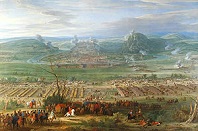
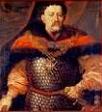




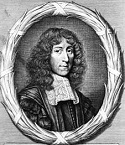


1674 The Third Great Migration of British to the New World begins as 23K Quakers from the North Midlands of England emigrate to the Delaware Valley colonies of West Jersey, Pennsylvania, and Delaware. In Jan. the month-long Vehement Frost grips Scotland, causing large numbers of animal and human deaths; another vehement frost occurs on Feb. 20-Mar. 29. On Feb. 9 the English reconquer New Amsterdam from the Dutch; on Feb. 19 after Charles II is forced to call Parliament in order to beg for funds, only to be told to stuff it, the Treaty of Westminster ends British involvement in the Anglo-Dutch (now French-Dutch) War (begun 1673) (ends 1678), restores New Amsterdam to the British under its former name of New York, and recognizes the pop. of New York and New Sweden as British subjects. On Apr. 22 the Netherlands signs a peace treaty with Munster, and another on May 11 with Cologne. On May 19 gen. Jan III Sobieski (1629-96), who has become a big hetman by financing his own army in the war against the Turks is elected king of Poland and grand duke of Lithuania by the nobles (until Feb. 2, 1696), going on to kick Turk butt and stabilize the realm, becoming known as "the Lion of Lechistan". On May 28 the German parliament declares war on France. On July 1 the Triple Alliance is formed by Spain, France, and the Netherlands. On July 19 the Court of Holland bans books by heretics Thomas Hobbes, Baruch (Benedict) de Spinoza, and ? Meyer. On Apr. 19-May 22 the French, led personally by Louis XIV siege and conquer Spanish-held Besancon, then conquer Franche-Comte (Franche-Comté) in SE France on the Swiss border; meanwhile on Aug. 11 the Great Conde fights the Battle of Seneffe (Senef) against William of Orange in the Netherlands to a draw (tactical French V, with the Allies retreating to fortified position (Arnhem is freed from French occupation), while the French under Gen. Turenne ravage the Palatinate, then defeat the Great Elector and field marshal Count Raimondo of Montecucculi; HRE Leopold I declares war on France. On Sept. 20 after the Dutch West India Co. (begun 1621) goes bankrupt and is dissolved, the Second Dutch West India Co. is formed, collapsing in 1791 during the French invasion of the Netherlands. On Oct. 16 HRE Leopold I fires chancellor (since 1652) Wenzel Eusebius Furst Lobkowitz for his pro-French policy plus some offensive remarks about him that he had privately passed to the French ambassador. On Oct. 26 Prince William of Orange occupies Saint-Grave (Saint-Gravé). On Nov. 10 New Amsterdam is formally ceded to Britain, and Sir Edmund Andros (1637-1714) becomes gov., with jurisdiction over Long Island, Pemaquid, and the region between the Conn. and Delaware Rivers. On Dec. 4 Louis Joliet and Father Jacques Marquette build the first dwelling on the site of modern-day Chicago, Ill., after which they become the first Euros to journey down the Mississippi River. The Office of Stadholder of the United Provinces becomes hereditary in the House of Orange. Ang Non becomes king of Cambodia (until 1675). Indian Mughal emperor Aurangzeb abolishes 80 types of taxes and reinstitutes the Muslim jizya tax for adult males who don't serve in the military, pissing-off non-Muslim Hindus; meanwhile guerrilla leader Shivaji Bhosle (1627-80) founds the Hindu Mahratta (Maratha) Kingdom (Empire) (Confederacy) in W India (ends 1818), declares it independent from the Muslim Moguls (Mughals), and is crowned in Raigarh. Lord Berkeley sells his share of New Jersey to a Quaker leader, but his affairs become so encumbered that three trustees, incl. William Penn are named to manage it. Guadeloupe is annexed by France. The French East India Co. establishes their HQ in Pondicherry in SE India, becoming the last of five trading posts established along the S Indian coast since 1668. Francois Xavier de Laval-Montmorency (1623-1708) becomes the first Roman Catholic bishop of Quebec in New France (Canada) (until 1688). The town of Waterbury, Ct. on the Naugatuck River is founded as Mattatuck by immigrants from Farmington; it becomes Waterbury in 1686. Drury Lane Theatre Royal in London reopens after the fire. Samuel Sewall (1652-1730) of Newbury, Mass., son of a prosperous yeoman who emigrated with him from England graduates from Harvard, and begins The Journal (Diary) of Samuel Sewall, which documents life in witch-hunting Mass. in the late Puritan period (1673-1729); he ends up as a judge at the 1692 Salem Witch Trials, repents in 1697, and is appointed chief justice of Mass. in 1717. Coffee arrives in Sweden; it doesn't become fashionable until the turn of the cent. German portrait painter Sir Godfrey Kneller (1646-1723) moves to England, where his rep gets him royal patrons like Charles II, James II, Peter the Great, etc. John Milton's Paradise Lost goes into a 2nd ed. in 12 books; Milton dies on Nov. 8, and his widow sells the rights for a lousy Ł8. The skeletons of two boys ages 12-13 and 10 are unearthed in the Tower of London by workmen doing some remodelling; Richard III's wards princes Edward V (b. 1470) and Richard of Shrewsbury, 1st duke of York (b. 1473), who disappeared there in 1483? Inventions: French army surgeon Etienne J. Morel devises the first battlefield tourniquet during the Siege of Besancon on Apr. 19-May 22, using a twisting stick - didn't I see that in "Deep Throat"? George Ravenscroft (1632-83) of England patents English lead (flint) glass, a heavy, water-clear crystal doped with lead oxide; lead is already being used in Italian paste jewelry? Architecture: The Old Bailey, burned down in the 1666 Great Fire is rebuilt in C London, with the court open to the weather to prevent the spread of disease; too bad, they change their minds and enclose it in 1734, leading to typhus outbreaks, incl. in 1750 when 60 die, incl. the lord mayor and two judges. The Porte Saint-Martin monument on Rue Saint-Martin in Paris is built, designed by architect Pierre Bullet (1639-1716) to celebrate Louis XIV's Vs on the Rhine and in Franche-Comte. Science: Persian-speaking French jewel trader Jean Chardin (1643-1713) pub. a complete description of the cuneiforms found on the Behistun Rock in Persia, becoming the first to note that they are always written in three parallel equivalent forms; in 1711 his complete Travels to Persia et al. are finally pub. Nonfiction: Nicolas Boileau-Despreaux (1636-1711), L'Art Poetique; ends the indecision about the merit of lit. with a defense in the style of Horace's "Ars Poetica", and defines the French neoclassical style - fork them English Puritan nutcases? Robert Boyle (1627-91), Excellency and Grounds of the Mechanical Hypothesis; his vision of universal mechanism. Alexandre Olivier Exquemelin (1645-1707), History of the Bouccaneers of America: A True Account of the Most Remarkable Assaults Committed of Late Years Upon the Coasts of West Indies by the Bouccaneers of Jamaica and Tortuga; original Dutch title "De Americaensche Zee-Roovers"; English trans. pub. in 1684; popularizes the term "Buccaneer" for a pirate, based on French pirates in Haiti who smoke-dry meats on wooden laticework boucans - Blackbeard, Bluebeard, Redbeard, Yellowbeard, name your hair color? John Josselyn, An Account of Two Voyages to New-England. Pierre Jurieu (1637-1713), Traite de la Devotion; gets him appointed as prof. of theology at Sedan U. Nicolas Malebranche (1638-1715), De la Recherche de la Verite. John Mayow (1640-79), Tractatus Quinque Medico-physici; researches on respiration and rickets, some originally pub. at Oxford in 1668; calls the portion of air that supports combustion "spiritus igneo-aerus" and "nitro-areus", from the acid portion of potassium nitrate KNO3, giving the first correct anatomical description of the mechanism of respiration, recognizing the existence of oxygen, founding the field of Pneumatic Chemistry. Louis Moreri, Le Grand Dictionnaire Historique; first pub. encyclopedia of history. Jesuit astronomer Ignace-Gaston Pardies, Globi Coelestis; star atlas. Thomas Willis (1621-75), Pharmaceuticae Rationalis. Anthony a Wood, Historia et Antiquitates Universitatis Oxoniensis. Art: The Freak Limner, Mrs. Elizabeth Freake and Baby Mary; by an unknown Am. colonial artist. Bartolome Esteban Murillo (1617-82), St. Francis. Music: Jean-Baptiste Lully (1632-87), Alceste (LWV 50) (opera) (Paris). Agostino Steffani (1653-1728), Psalmodia Vespertina (first work). Plays: William Cavendish, 1st Duke of Newcastle-upon-Tyne (1592-1676), The Triumphant Widow. Pierre Corneille (1606-84), Surena (Oct. 11) (Paris). Philippe Quinault (1635-88), Cadmus; Alceste. Jean Baptiste Racine (1639-99), Iphigenie en Aulide (Aug. 18) (Versailles). Poetry: Nicolas Boileau-Despreaux (1636-1711), Le Lutrin; mock-heroic poem later used by Alexander Pope as a model for "Rape of the Lock". Novels: Giovanni Battista Basile (1575-1632), Il Pentamerone. Births: German opera composer Reinhard Keiser (d. 1739) on Jan. 9 in Teuchern. French poet-dramatist Prosper Jolyot de Crebillon (Crébillon) (d. 1762) on Jan. 13 in Dijon; father of Claude Prosper Jolyot de Crebillon (1707-77). Am. Va. planter (founder of Richmond, Va.) William Byrd II (d. 1744) on Mar. 28 in Westover Plantation, Charles City County, Va.; son of William Byrd I (1652-1704); father of William Byrd III (1728-77). English Whig statesman-agriculturalist Charles "Turnip" Townshend, 2nd Viscount Townshend (d. 1738) on Apr. 18 in Raynham Hall, Norfolk; brother-in-law of Sir Robert Walpole (1676-1745); educated at Eton College, and King's College, Cambridge U. English dramatist and poet laureate (1715-18) Nicholas Rowe (d. 1718) on June 20 in Little Barford, Bedforeshire; educated at Westminster School. English "Joy to the World", "O God, Our Help in Ages Past" Nonconformist hymnodist ("Father of English Hymnody") Isaac Watts (d. 1748) on July 17 in Southampton; Nonconformist family. English writer-soldier-statesman and orrery king Charles Boyle, 4th Earl of Orrery (d. 1731) on July 28 in Little Chelsea, London; educated at Christ Church, Oxford U.; namesake of that mechanical model of the solar system with all them moving globes and balls (1704). French regent (last) (1751-23) Philippe II, Duke of Orleans (d. 1723) on Aug. 2 in Saint-Cloud; son of Philippe I of Orleans (1640-1701); nephew of Louis XIV. British (Welsh) dandy (MC in Bath) Richard "Beau" Nash (d. 1762) on Oct. 16 in Swansea; educated at Jesus College, Oxford U. English "Prince of Denmark's March (Trumpet Voluntary)" Baroque composer Jeremiah Clarke (d. 1707) in London; student of John Blow. English PM (1718-21) Charles Spencer, 3rd Earl of Sunderland (d. 1722); 2nd son of Robert Spencer, 2nd Earl of Sunderland (1641-1702). French "Ode to Worms" diplomat-poet Jean-Francois Leriget de La Faye (d. 1731) in Vienne, Isere; helps young Louis XV find a wife. English "Friendship in Death" poet ("the Heavenly Singer") Elizabeth Singer Rowe (d. 1737). English agricultural pioneer (atty. and gentleman farmer) (the original Green Acres?) Jethro Tull (d. 1741) on Mar. 30 in Basildon; known for pioneering the seed drill and having a cool name?; attends St. John's College in Oxford (no degree) at age 17, goes on the grand tour of Europe for three years, studies law for six years, marries Susanna Smith of Burton-Dassett, and moves with her to a farm in Oxfordshire, where he begins planting trefoil (St. Foin) and suffers from kidney stones, turning into an agricultural scientist and the rest is, ahem. English actress Anne Bracegirdle (d. 1748). English sentimental pastoral poet (Whig) Ambrose "Namby-Pamby" Philips (d. 1749) in Shropshire, Leicestshire; educated at Shrewsbury School, and St. John's College, Cambridge U.; enemy of Alexander Pope; his nickname is satirical. Deaths: English Cavalier poet Robert Herrick (b. 1591) in Oct. in Devon; dies a lifelong bachelor; "The greatest song writer ever born of English race" (Algernon Charles Swinburne); "Thus times do shift; each thing his turn does hold; new things succeed as former things grow old"; "Gather ye rosebuds while ye may,/ Old time is still a-flying;/ And this same flower that smiles today,/ To-morrow will be dying." French poet Jean Chapelain (b. 1595) on Feb. 22. English singer and composer John Wilson (b. 1595). French portrait painter Philippe de Champaigne (b. 1602). French philosopher Franciscus van den Enden (b. 1602) on Nov. 27 in Paris (hanged for a plot to establish a repub. in Normandy). Italian composer Giacomo Carissimi (b. 1605) on Jan. 12. British politician Sir Orlando Bridgeman (b. 1606) on June 25. Dutch painter Jan Lievens (b. 1607) on June 4 in Amsterdam. English "Paradise Lost and Paradise Regained" poet John Milton (b. 1608) on Nov. 8 in Bunhill, London (kidney failure) - he would be 66? English statesman-historian Edward Hyde, 1st Earl of Clarendon (b. 1609) on Dec. 9 in Rouen, France (exile); buried in Westminster Abbey. Irish leader Murrough O'Brien, 1st earl of Inchiquin (b. 1614) on Sept. 9 in Limerick; dies after converting to Roman Catholicism in 1656. French scientist Jean Pecquet (b. 1622). English deputy of Ireland (1655-9) Henry Cromwell (b. 1628) on Mar. 23 in Cambridgeshire. English metaphysical poet Thomas Traherne (b. 1636). Swedish poet Lars Johansson (b. 1638). English Restoration composer Pelham Humphrey (b. 1647) on July 14 in Windsor.







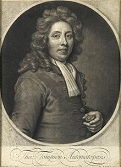



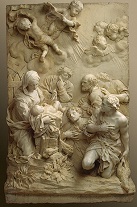
1675 North Am. has a year without a summer, becoming the 2nd coldest winter recorded in North Am. in the last six cents. The English West Indies now have over 100K black slaves, while the North Am. colonies only have about 5K. By this year there are 3K+ coffeehouses in England. On Feb. 5 Isaac Newton writes a Letter to Robert Hooke, with the soundbyte: "If I have seen further it is by standing on ye sholders of Giants"; later when their rivalry goes bitter, Newton starts dropping bigger and bigger slams on Hooke, and ultimately tries to erase his memory? On June 24 the 14-mo. King Philip's War (Metacomet's Rebellion) (ends Aug. 1676) begins in New England, ending 55 years of peace after three Wampanoags are hung by Plymouth gov. Josiah Winslow for the Jan. murder of Indian informer John Sassamon (Wassausmon) (b. 1620) at the order of Wampanoag chief King Philip of Pokanoket (Metacomet) (1639-76) (2nd son of Massasoit, the great dope who greeted Josiah's parents in 1621, and had been the staunch ally of the Puritans for 40 years, only to set his own people up for extermination?) which, combined with decades of racial, social and economic discrimination threatening their existence causes Philip to repudiate all treaties with white man's forked tongue and begin raiding Puritan settlements, burning and massacring settlers, which in turn, combined with Winslow's cold-blooded no-compromise racism, gets Puritans and Indians into an apocalyptic death struggle, becoming the deadliest war per-capita ever fought on U.S. soil (2x the U.S. Civil War, 7x the Am. Rev. War); eventually the Indians burn a third of the 100 towns in New England, causing a fleeting proposal to build a wall around the core and let the Indians have the rest; the Boston Indian Imprisonment Act orders the arrest of all Indians entering the city (never repealed); Capt. Benjamin Church (1639-1718), grandson of Mayflower passenger Richard Warren, and husband of the daughter of William Bradford's stepson Constant Southworth, who last year become the first Englishman to attempt to live among the Indians and treat them like human beings, settling in the SE tip of Narragansett Bay (at Sakonnet, E of Aquidneck Island in modern-day Little Compton, R.I.) is commandeered by the wrong (Winslow) side, and organizes the first co. of Rangers in Mass., emerging as the first Am. Indian fighter and the prototype for Daniel Boone, Davy Crockett, Rambo et al., providing the whites with info. on Indian movements from Indian traitors, although he doesn't know the plan is genocide until it's too late to stop it?; too bad, religious toleration king Roger Williams (1603-83) of R.I., a longtime friend of the Indians stinks himself up as a capt. of the Providence militia in the war. On June 28 after Swedish allies of Louis XIV invade Prussia, the Great Elector hustles back from the upper Rhine and decisively defeats them at the Battle of Fehrbellin. On July 27 after brilliant successes the preceding winter, which bring retired Austrian field marshal Count Raimondo of Montecucculi back, French field marshal Vicomte Turenne (b. 1611) is KIA at the Battle of Sasbach in Baden, and his French troops retreat back across the Rhine, allowing Montecucculi's troops to invade Alsace; just in time, the Great Conde appears on the battlefield on the Rhine front in his last appearance, and gets in a war of maneuver with his old ally, showing he's over those old cowboy days - there's a new sheriff here, and his name is me? In July a petty squabble between a frontier planter and Doeg Indians in Va. escalates to a force of Va. and Md. militiamen laying siege to the Susquehannocks, who had nothing to do with it, and murdering five of their chieftains in cold blood when they come out to negotiate, thus turning them wild, causing them to begin attacking white men down to the James River, where rich plantation owner Nathaniel Bacon's overseer is killed. In summer the Scottish Hurricane of 1675. On Sept. 7 (Aug. 28 Old Style) the Second Great Colonial Hurricane in Conn., R.I., and Boston, Mass. is almost as powerful as the 1635 New England Hurricane. On Nov. 2 the city of Medellin (Medellín) (Villa de Nuestra Seńora de la Candelaria de Medellín) in NW C Colombia (modern-day pop. 2.4M/3.7M) is founded by queen consort Mariana of Austria. The first Noel the angel did say? In Dec. the English colonists create a 1K-man army (largest white army yet in New England) under the title of United Colonies of Mass., Conn., and Plymouth, led by Gen. Josiah Winslow, with a plan to invade the colony of Rhode Island for not supporting them, then wipe out the large Narragansetts tribe before it joins King Philip and wipes them all out; on Dec. 2 a day of prayer is observed throughout New England, calling on the "God of Armies" to help them kick Indian butt; on Dec. 19 the Great Swamp Fight (Massacre) of the Narragansetts sees the English colonists invade the Narragansett swamp stronghold W of Rhode Island (the first known Indian fort, poorly built), and get their white butts kicked (20% casualty rate, greater than D-Day) until the Indians run out of gunpowder and abandon the fort, leaving their women, children and old behind, and the wonderful whites ditch the idea of living in an Injun-built fort filled with food and instead burn it with the Indians inside, listening to their screams; the whites lose 200 of 1K, and the Indians lose 600 of 3K? - the first Hitlers in America, led by Gen. you-know-what? Sweden and Denmark go to war. Charles II of Spain attains the age of majority. Charles II of England receives 500K crowns from Louis XIV, enabling him to prorogue Parliament for 15 mo. Victor Amadeus II (1666-1732) becomes duke of Savoy, with his mother Marie Jeanne Baptiste de Savoie Nemours (1644-1724) (great-granddaughter of Henry IV of France) as regent(until 1684). The Hungarian Kurucs under Count Pal Wesselenyi (-1667) occupy Debrecen, after which the town is sacked 3x more before the end of the year by three more armies; meanwhile the Kurucs try to gain recognition as an independent country, sending envoys to Poland and France. Queen Tajul Alam of Indonesia dies, and is succeeded by Queen Nur ul Alam (-1678). Hyonjong II dies, and Sukchong (-1720) becomes Yi king of Korea - sucks what? Chettha IV becomes king of Cambodia (until 1695). A revolt of the Chahar in China under Khan Burni is quickly put down. Charles II designates certain privy councilors as the Lords of Trade and Plantations, charging them to make the colonies abide by his mercantilist laws; they name governors to head a nice new colonial bureaucracy that eventually causes you know what. Dutch marine painter Willem van de Velde the Elder (1611-93) of Amsterdam moves to London as Charles II's marine painter. Architecture: Sir Christopher Wren begins rebuilding St. Paul's Cathedral in London (finished 1710). The Eleanor Cross at Charing Cross in C London (erected by Edward I) is replaced by a statue of Charles I mounted on horseback. Spanish architect Jose Benito de Churriguera (1665-1725) becomes the royal architect of Charles II, initiating his own style of fantastically lavish Baroque ornamentaion, incl. spiral columns in the Church of Tepoztlan in Mexico et al. Science: On Aug. 10 the Royal Greenwich Observatory in Greenwich, London overlooking the River Thames, designed by Sir Christopher Wren is begun by order of Charles II in order to make a new improved catalog of stars for ship navigation; Charles II selects clockmaker ("Father of English Clockmaking") Thomas Tompion (1639-1713) to build two identical clocks with long pendulums and small arc swing as suggested by Robert Hooke, driven by a deadbeat escapement invented by Richard Towneley (1629-1707), that only need to be wound once a year, proving so accurate that they become instrumental in correcting astronomical calculations; John Flamsteed (1646-1719) is appointed the first astronomer royal of England, but he is so slow at calculation that at in 1704 the catalog is still incomplete but is pub. against his wishes, and he publicly burns 300 of the 400 copies in protest; meanwhile Sir Isaac Newton uses his catalog to verify his theory of gravitation. 19-y.-o. Edmund Halley (b. 1656) devises a new method for determining planetary orbits; Tompion and Hooke go on to make some of the first watches with balance springs. Jean Picard observes a faint glow in a mercury barometer tube when shaken - how about when stirred? Danish astronomer Ole (Olaus) Christensen Roemer (1644-1710) tries to measure the speed of light by studying Jupiter's moons, but is unable to determine a number for it. Gian Cassini discovers the big gap between Saturn's A and B rings, AKA the Cassini Division; the narrow gap inside the A ring is later called the Encke Division. Gottfried Wilhelm von Leibniz (re)discovers the Calculus; his prettier notation becomes std. Nonfiction: Paul Amman (1634-91), Supellex Botanica. Antoine Arnauld (1612-94), L'Impiete de la Morale des Calvinistes. Robert Boyle (1627-91), Incalescence of Quicksilver with Gold; A Historical Account of a Degradation of Gold; abstruse alchemical treatises - they just keep on clawing and biting? Sir William Dugdale (1605-86), The Baronage of England (1675-6). Nicholas Lemery, Cours de Chemie; becomes the most popular French chemistry textbook. Marcello Malpighi, Anatome Plantarum; founds microscopic anatomy. Maria Sibylla Merian (1647-1717), Neues Blumenbuch; her first book of scientific illustrations. Henry More (1614-87), Opera Theologica. Jacques Savary (1622-90), Le Parfait Negociant. Edward Sherburne (tr.), The Sphere of Marcus Manilius. Philipp Jakob Spener (1635-1705), Pia Desideria. Thomas Traherne (1636-74), Christian Ethics (posth.). Christian Weise (1642-1708), Schediasma Curiosum de Lectione Novellarum; the importance of newspapers to get info. on current affairs. Bishop John Wilkins (1614-72) and William Lloyd, On the Principle and Duties of Natural Religion. Art: Hendrick Danckerts (1625-80), Royal Gardener John Roe and Charles II. Giambattista Foggini (1652-1725), The Adoration of the Shepherds (marble sculpture). Jacob Isaackszoon van Ruisdael (1628-82), Jewish Cemetery. Music: Matthew Locke (1621-77), Music for Thomas Shadwell's Semi-Opera "Psyche". Plays: John Dryden (1631-1700), Aureng-Zebe (drama). Nathaniel Lee (1653-92), Nero, Emperor of Rome (Drury Lane, London) (first play). Philippe Quinault (1635-88), Thesee. William Wycherley (1641-1716), The Country Wife (comedy) (Theatre Royal, Drury Lane, London) (Jan.); title is a pun on "cunt"; based on the plays of Moliere, with the verse replaced by lewd sexually-explicit prose; a rake pretends to be impotent to get into married women's beds; meanwhile an inexperienced young you know what arrives in London and discovers sex. Poetry: Japanese poet Basho (Jap. "banana tree") (real name Matsuo Munefusa) (1644-94) popularizes 17-syllable (5-7-5) Haiku; the term is an abbreviation of "haikai no ku" (verse of haikai); his most famous is "Old Pond": "Furuike ya / Kawazu tobikomu/ Mizu no oto" (Old pond/ A frog jumps/ The sound of water); another is "Hatsu shigure/ Saru mo komino wo/ Hoshige nari" (The first cold shower/ Even the monkey seems to want/ A little coat of straw); another is "Fuji no kaze/ Ya oogi ni nosete/ Edo miyage" (The wind of Mt. Fuji/ I've brought my fan/ A gift from Edo). Charles Cotton (1630-87), Burlesque upon Burlesque... some of Lucian's Dialogues. Novels: Christian Weise (1642-1708), Die Drey Klugsten Leute in der Gantzen Welt. Births: French courtier-soldier-writer Louis de Rouvroy, duc de Saint-Simon (d. 1755) on Jan. 16 in Versailles; loves to satirize Louis XIV's court; grand-uncle of Henri de Saint-Simon (1760-1825). French mapmaker Guillaume Delisle (de l'Isle) (d. 1725) on Feb. 28 in Paris; son of Claude Delisle (1644-1720). Italian composer-violinist Evaristo Felice Dall'Abaco (d. 1742) on July 12 in Verona; son of guitarist Damiano dall'Abaco; father of Joseph Marie Clement Ferdinand dall'Abaco (1710-1805). English Baroque historical painter Sir James Thornhill (d. 1734) (b. 1676?) on July 25; student of Thomas Highmore, Antonio Verrio, and Louis Laguerre; knighted in 1720. English poet William Somerville (Somervile) (d. 1742) on Sept. 2 in Staffordshire; grows up in Edstone, Warwickshire; educated at Winchester College, and New College, Oxford U. English superbrain natural philosopher (disciple of Isaac Newton) and Anglican clergyman Samuel Clarke (d. 1729) on Oct. 11 in Norwich; educated at Caius College, Cambridge U. Japanese emperor #113 (1687-1709) Higashiyama (Asahito) (d. 1710) on Oct. 21; 5th son of Reigen (1654-1732). English "Lintot's Miscellany" publisher Barnaby Bernard Lintot (Lintott) (d. 1736) on Dec. 1 in Southwater, Sussex; rival of Jacob Tonson. English politician, rake and dueling fool Charles Mohun, 4th Baron Mohun (d. 1712). Deaths: French praline-chomping Marshal (Marechal) du Plessis-Praslin (b. 1602) on Dec. 23 in Paris. French aristocrat Duchess d'Aiguillon (b. 1604). French scientist Gilles Personne de Roberval (b. 1610). French field marshal Vicomte de Turenne (b. 1611) on July 27 in Sasbach (KIA). German church composer Andreas Hammerschmidt (b. 1612). Dutch painter Gerrit Dou (b. 1613) on Feb. 9 in Leiden; falls into obscurity until the 1970s. Dutch painter Louis Elsevier (b. 1618). English physician Thomas Willis (b. 1621) on Nov. 11 in London; buried in Westminster Abbey. Polish theologian Stanislaw Lubieniecki (b. 1623) on May 18 in Hamburg. English buccaneer Daniel Johnson (b. 1629); captured by a fleet of four Spanish ships for the $25K reward, then executed in Panama. Dutch painter Jan Vermeer (b. 1632) in Delft; dies in abject poverty, leaving his widow to petition the local guild for charity; his work is neglected until the late 19th cent.; less than 40 of his works (34?) survive to modern times, and five end up in the Museum of Modern Art (MoMa) in New York City. Italian duke of Savoy (1638-75) Charles Emmanuel II (b. 1634) on June 12. French priest-explorer Jacques Marquette (b. 1637). Scottish mathematician James Gregory (b. 1638) in Oct. in Edinburgh.




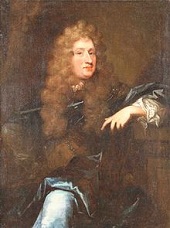
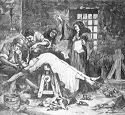
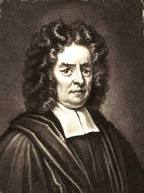

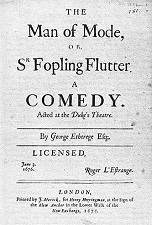


1676 On Jan. 14 Joshua Tefft, an Englishman who had "gone Injun" is captured in Mass., claiming to have been captured by the Narragansetts and to have been at the Great Swamp Fight as a slave, and not engaged in the fighting; after they disbelieve him, on Jan. 18 he is hanged, drawn and quartered at Smith's Castle in Wickford, R.I., with "standers by being unwilling to lavish pity upon him that had divested himself of nature itself, as well as religion" - the first Dances with Wolves? On Jan. 29 tsar (since 1645) Alexis I (b. 1629) dies leaving a kingdom covering 2M acres, and his son Fyodor (Theodore) III Alexeyevich (1661-82) becomes Russian Romanov tsar #3 (until May 7, 1682). On Feb. 10 English-born Am. settler Mary Rowlandson (1637-1710) and her three children are abducted from their home in Lancaster, Mass. by Indians; on May 2 they are ransomed for Ł20; she goes on to pub. "The Sovereignty and Goodness of God" in 1682. On Mar. 12 the Clarke Garrison House Massacre S of Plymouth Colony sees 11 whites, mostly women and children massacred, causing the Plymouth authorities to execute four Indians accused of taking part. On May 26 a fire in Southwark, England burns 624 houses plus the town hall. In May 29-y.-o. rich spoiled Cambridge U. grad. and recent (1674) immigrant Nathaniel Bacon (1647-76) defies the authority of Va. Gov. Sir William Berkeley (1606-77) by organizing an armed band of "common men" (white and black, many of them debtors eyeing Indian land) vigilantes in a war against the Indian "wolves, tigers, and bears" who prey upon "our harmless and innocent lambs", occupying Bacon's Castle, a colonial house with distinctive decorative end gables; after issuing the Declaration of the People of Virginia on July 30 to gain support, Bacon leads Bacon's Rebellion in colonial Virginia against Berekely's govt., having him arrested and burning Jamestown in Sept.; unfortunately, Bacon dies of swamp fever in Oct., allowing Berkeley to regain control and subdue the rebels, hanging 23 of them and confiscating several estates; when Berkeley captures Bacon's closest lieutenant, exclaiming, "I am more glad to see you than any man in Virginia; Mr. Drummond, you shall be hanged in half an hour", this and other excesses cause his recall to England, and a royal commission makes pacification treaties with the wronged Indians, granting them tiny reservations which survive to modern times; Virginia is so weakened that a British military force is dispatched to protect it; the rebellion causes the supply of indentured servants to Chesapeake Bay to dry up, causing a systematic transition to African slaves, helped by distrust of white indentured servants? On June 1 a Dutch-Danish fleet under adm. Cornelis Tromp defeats the Swedes at the Battle of Oland (Öland), allowing the Danes to invade Scania unopposed. On June 20 the governing council of Charlestown, Mass. proclaims June 29 as a Day of Thanksgiving, becoming the first such official proclamation. In June after being appointed in Mar. by the Lords of Trade, Edward Randolph (1632-1703), the first Englishman to make an entire career in the hated colonial service arrives in Mass. to demand that Mass. answer complaints that it had usurped propriety rights in New Hampshire and Maine. In June the Danish army lands in Helsingborg in Skane, S Sweden, and conquers the whole province by July; causing Danish maj. gen. Jacob Duncan (-1685) to be sent with 3.5K troops to take Halmstad in Halland, then advance N to Gothenburg to link up with the Norwegian army under gen. Ulrik Frederick Gyldenlove, Count of Laurvig (1638-1704) (illegitimate son of Frederick III of Denmark); too bad, on Aug. 17 the Battle of Halmstad (Fyllebro) in Fyllebro (3 mi. S of Halmstad in SW Sweden) sees the Swedes under 20-y.-o. Charles XI and gen. (later field marshal) Count Rutger von Ascheberg (1621-93) decisively defeat the Danes, with 49 killed and 130 wounded vs. 1K Danes killed and 1.5K taken POW. On July 17 Marie Madeleine Marguerite d'Aubray, Marquise de Brinvilliers (b. 1630) is executed by the Chambre Ardente for poisoning her father, brother, and two sisters with Aqua Tofana by being forced to drink 16 pints of water before being beheaded and burned at the stake; the idea of being poisoned himself freaks Louis XIV into starting an official investigation into poisonings known as the Affair of the Poisons, and hiring food tasters. On July 18 the Plymouth congregation renews its covenant first made in Leiden over 50 years earlier; "We are, though descended of a noble vine, yet become the degenerate plant of a strange vine unto God; we have been a proud generation, though we are the sons and daughters of Zion". On July 22 Pope (since 1670) Clement X (b. 1590) dies, and on Sept. 21 Benedetto Odescalchi is elected Pope (#240) Innocent XI (1611-89) (until Aug. 12, 1689). On Aug. 12 after the town of Hadley is saved from the Wampanoags by the mysterious Angel of Hadley, and his squaw and little son are captured and sold as West Indies slaves, King Philip (b. 1639) and his few remaining followers (Annawon et al.) are surprised by Capt. Benjamin Church on Mount Hope in Rhode Island, and King Philip is shot and killed as he flees by a Pocasset named Praying Indian John Alderman, then beheaded and quartered like a traditional English traitor; Annawon succeeds King Philip, holding out for several mo., then making a peace treaty with the English, only to be martyred, ending King Philip's War in Plymouth Colony (begun 1675), along with any independence for the Indians of Winslow's Whitened-Up New England, whose losses total 5K of 20K, incl. 2K in battle, and 3K of sickness or starvation; 2K flee, and 5K-9K are shipped as slaves to certain death in Caribbean sugar plantations, starting with the Seaflower, containing 178 Indians, described as guilty of "many notorious and execrable murders, killings and outrages" by Josiah Winslow; Capt. Sprague ends up dumping them in Africa when nobody wants them?; King Philip's head is brought into Plymouth on Aug. 17 (Thur.) "in great triumph" right after public worship for a day of Thanksgiving, "so that in the day of our praises our eyes saw the salvation of God"; the head is placed on a palisade of the town fort, where it remains for over 20 years, becoming the town's first attraction long before Plymouth Rock - this is our country? On Sept. 25-Oct. 14 after the Ottomans send a new 200K-man army to capture the Ukraine, they fight the Poles at the Battle of Zurawno in Ukraine, resulting in a draw; on Oct. 17 Poland signs the Peace (Treaty) of Zurawno, reviving the 1674 Peace of Buczacz, but with no tribute this time, and less land given to the Turks, ending the Polish Ottoman War (begun 1672); Poland as a kingdom is beginning to disintegrate and is on the way to a fire sale (partition). On Nov. 16 Nantucket Island Prison in Mass. is founded. On Dec. 14 the Swedes win a minor V over the Danish at the Battle of Lunden. Ahmed Kiupril dies, and his brother-in-law Merzifonlu Kara Mustafa Pasha (1634-83) becomes grand vizier of Turkey. The French score several naval Vs in the Mediterranean against the Dutch and Spanish. There is an influenza epidemic in England. England gives legal protection to the Sabbath observance. By mutual agreement New Jersey is divided by a diagonal line into East and West New Jersey, with Sir George Carteret taking the E and the Quakers taking the W. Irish Quaker William Edmundson makes the first public speech against slavery in North Am. By this year the Lords Baltimore (Calverts) have granted 60 manorial estates in Maryland. The Hospitallers start a school of anatomy. English divine Humphrey Prideaux (1648-1724) first describes the Arundel Marbles, containing the first Greek inscriptions examined in England, allowing important dates in Greek history to be confirmed; in 1628 John Selden compiles Marmora Arundeliana, a catalog of the marbles. French sculptor Nicolas Coustou (1658-1733) moves from Lyons to Paris, and goes on to work his way up to #1 sculptor along with his brother Guillaume Coustou the Elder (1677-1746) and his son Guillaume Coustou the Younger (1716-77), creating a school that cranks out the marble people; too bad, many of them are destroyed in the 1789 French Rev. Edmund Halley travels to St. Helens to catalog stars. Emperor Johannes I of Ethiopia decrees that Muslims must be segregated from Christians. Sir Christopher Wren begins building the Trinity College Library in Cambridge (finished 1684). Science: Robert Plot digs up the first dinosaur bone in Cornwall, England - can I feel it? Thomas Sydenham rejects the theory that the diseased state is an exception to natural law. William Woolcott discovers artificial water filtration. Nonfiction: Paul Amman (1634-91), Character Naturalis Plantarum. Johannes Leyser, The Triumph of Polygamy; misquotes the 585 Council of Macon to the effect that women don't have souls, starting a myth eagerly advanced by anti-religionists. Edme Mariotte (1620-84), Essais de Physique (4 vols.) (1676-9). Benjamin Thompson, New England's Crisis. Izaak Walton (1593-1683), The Compleat Angler, 5th ed.; "I have laid work by, and gone a-fishing"; contains a new chapter "Instructions How to Angle for a Trout and Grayling in a Clear Stream" by Charles Cotton. Christian Weisse, Der Kluge Hoff-Meister; handbook for teachers. Roger Williams (1603-83), George Fox Digg'd Out of His Burrowes. Art: Sir Godfrey Kneller (1646-1723), Mr. Banks. Bartolome Esteban Murillo (1617-82), Madonna Purissima. Music: Thomas Mace (1613-1709), Musick's Monument. Plays: Sir George Etherege (1635-92), The Man of Mode; or, Sir Fopling Flutter (comedy); libertine Dorimant chases young heiress Harriet while trying to dump Mrs. Loveit; popularizes the word "fop". Nathaniel Lee (1653-92), Sophonisba, or Hannibal's Overthrow; Gloriana, or the Court of Augustus Caesar; imitates John Dryden. Thomas Otway (1652-85), Don Carlos (tragedy). Philippe Quinault (1635-88), Atys. William Wycherley (1640-1716), The Plain Dealer (last comedy); (Dec. 11); based on Moliere's "The Misanthrope"; Capt. Manly loses his sweetheart Olivia to his best friend Vernish, and gets revenge by sending a girl dressed as a pageboy to seduce her; "I know not of a single comedy of either the ancients or the moderns where there is so much wit" (Voltaire); Wycherly's masterpiece?; so full of obscenity that Isaac Bickerstaffe bowlderizes it. Births: Am. Penn. proprietor (1712-26) Hannah Callowhill Penn (d. 1726) on Feb. 11 in Bristol, England; 2nd wife (1696-) of William Penn (1644-1718). Scottish Presbyterian divine Thomas Boston (d. 1732) on Mar. 17 in Duns. Hungarian-Transylvanian prince Francis (Ferenc) II Rakoczy (Rakoczi) (Rákóczi) (d. 1735) on Mar. 27 in Borsi. Swedish king (1720-51) and landgrave of Hesse-Cassel (1730-51) Frederick (Fredrik) I (d. 1751) on Apr. 23 in Kassel; son of Charles I of Hesse-Cassel (1654-1730) and Maria Amalia of Courland; brother of William VIII of Hesse-Cassel (1682-1760); husband (1715-) of Ulrika Eleonora of Sweden (1688-1741). Italian mathematician Jacopo Francesco Ricatti, Count Ricatti (d. 1754) on May 28 in Venice. Scottish "Vitruvius Britannicus" architect (founder of the Georgian style) Colen Campbell (d. 1729) on June 15 in Brodie; student of James Smith. English Deist philosopher Anthony Collins (Gael. "holly") (d. 1729) on June 21. German field marshal ("the Great Drillmaster of Europe") prince Leopold I of Anhalt-Dessau (Der Alte Dessauer) (d. 1747) on July 3 in Dessau; 2nd son of John George II, prince of Anhalt-Dessau (1627-93) and Henriette Katharina (daughter of Prince Frederick Henry of Orange); father of Leopold II Maximilian (1700-51); modernizer of the Prussian army. Dutch scholar Adriaan Reland (Hadrianus Relandus) (d. 1718) on July 17 in De Reijp, North Holland. English Whig PM #1 (1721-42) Sir Robert Walpole, 1st Earl of Orford (d. 1745) on Aug. 26 in Houghton Hall, Norfolk; educated at Eton School, and King's College, Cambridge U.; created earl in 1742; father of Horace Walpole (1717-97) - the original you can't always get you want but if you try you might find you get what you need man? Spanish Benedictine monk-scholar-critic Benito Jeronimo (Jerónimo) Feijoo (Feijóo) y Montenegro (d. 1764) on Oct. 8 in Casdemiro, Galicia; combats popular supersitions, becoming a rare light in a sea of dim minds in a declining country? Russian field marshal Mikhail Mikhailovich Golitsyn (Galitzine) (d. 1730) on Nov. 1 in Moscow; son of Prince Mikhail Andreyevich Golitsyn (1639-87). Italian Franciscan friar (St.) Leonard of Port Maurice (d. 1751) on Dec. 20 in Porto Maurizio; feast day: Nov. 26/27. English "Cyder" poet John Philips (d. 1709) on Dec. 30 in Bampton, Oxfordshire; educated at Winchester College and Christ Church, Oxford U. Scottish mariner Alexander Selkirk (Selcraig) (d. 1721) in Lower Largo, Fifeshire; shipwrecked in his ship Cinque Ports in Sept. 1704; model for Daniel Defoe's 1719 "Robinson Crusoe". Deaths: English soldier William Cavendish, 1st duke of Newcastle-upon-Tyne (b. 1592) on Dec. 25 in Welbeck Abbey, Nottinghamshire; buried in Westminster Abbey. French scientist Emanuel Maignan (b. 1601). Italian opera composer Francesco Cavalli (b. 1602) on Jan. 14 in Venice. Am. Conn. gov. John Winthrop Jr. (b. 1606). Dutch adm. Michiel de Ruyter (b. 1607) on Apr. 29. German hymn writer Paul Gerhardt (b. 1607) on May 27 in Lubben, Saxe-Merseburg. English jurist-statesman Sir Matthew Hale (b. 1609). English Digger-founder-turned-Quaker Gerrard Winstanley (b. 1609) on Sept. 10. French military officer Paul de Chomedey, Sieur de Maisonneuve (b. 1612) on Sept. 9 in Paris. Swedish gen. Carl Gustaf Wrangel (b. 1613) on July 5 in Rugen, Swedish Pomerania. German author Johann Jakob Christoph von Grimmelshausen (b. 1625). Turkish Jewish sect founder Sabbatai Zevi (b. 1626) on Sept. 17 in Dulcigno (Ulcinj), Montenegro (in exile). Russian tsar (1645-76) Alexis I (b. 1629) on Jan. 29 in Moscow. English physician-scholar Henry Stubbe (b. 1632) in Briston (accidental drowning) - the good die young? Am. Wampanoag chief Metacomet (King Philip) (b. 1639) on Aug. 12 on Mount Hope, Bristol, R.I.; murdered by Praying Indian John Alderman. Am. celeb Jane Rolfe Bolling (b. 1650); granddaughter of Pocahontas; dies shortly after giving birth to son Col. John Bolling (1676-1729), who marries Mary Kennon (1679-1727), and have 6 surviving children ("Red Bollings"), causing many Americans to later claim descent from Pocahontas incl First Lady Edith Wilson; her hubby Robert Bolling (1646-1709) later marries Anne Stith and has 9 children ("White Bollings") incl. son Robert Bolling Jr. (1682-1749), a 10th gen. ancestor of U.S. pres. George W. Bush, causing him to mistakenly claim relationship to Pocahontas.






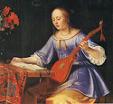
1677 On Jan. 21 a pamphlet on smallpox by Rev. Thomas Thacher titled A Brief Rule to guide the Common People of New England: How to order themselves and theirs in the Small Pocks, or Measles is pub. in Boston, Mass., becoming the first medical pub. in America; 2nd ed. pub. in 1702. On Apr. 11 34K French under the Duke of Orleans defeat 32K Dutch at the Battle of Cassel, with 8K Dutch casualties and 3K taken POW. On May 29 Virginia signs a new treaty with the Amonsoquath Cherokee Indians. In May a treaty is signed in Warsaw between France, Poland, Transylvania, and the new Kuruc Community (Universitas); Louis XIV guarantees 100K tallers if they attack the Hapsburgs with a min. 15K-man army; in the fall a 2K-man French, Polish and Tartar army arrives in Upper Hungary to assist them, but never gets anywhere; meanwhile Hapsburg gen. Raimondo Montecuccoli draws up a plan to quash any remnants of Hungarian independence and move in German colonists, uttering the soundbyte "All Hungarians are traitors". On June 1 Danes under adm. Niels Juel (1629-97) defeat the Swedish under vice-adm. Eric Sjoblad off Moen, followed by another a major V on July 1-2 against the larger Swedish fleet under adm. Henrik Horn (1618-93) in the Battle of Koge (Křge) Bay in the Falsterbo Channel S of Sweden, with the Swedish losing 20 ships and 3K casualties vs. 0 ships and 375 casualties for the Danes, becoming the greatest Danish naval V in history (until ?). On July 14 the Battle of Landskrona (Moeinge) in S Sweden is a decisive V for 13K Swedes under Charles XI over 12K Danes under Christian V. On Sept. 17 the Danes defeat the Swedes and capture Rugen. On Nov. 4 Protestant William II of Orange (b. 1650) (later William III of the U.K.) marries Protestant Princess Mary Stuart (b. 1662) (later Mary II), daughter of Catholic prince James Stuart, duke of York; she isn't too happy since he's 12 years older and 4 in. shorter, but both her daddy and king Charles II like the idea of an Anglo-Dutch alliance, and plans for her betrothal to the French dauphin fall through; too bad, Prince James just set himself up for an early retirement in 1688? On Dec. 12 the Great Elector takes Stettin. The Second Russo-Turkish War begins (ends 1681); only 10 more to go (until 1918). Culpepper's Rebellion begins in the Carolinas (ends 1680). Mariana of Austria is forced into exile from Spain by Charles II's illegitimate brother (son of Philip IV) John (Don Juan Jose) of Austria the Younger (1629-79). James Butler is restored as lord lt. of Ireland by Charles II (until 1682). Former war secy. Michel le Tellier becomes chancellor of France, going on to work to effect the revocation of the Edict of Nantes in 1685 in conjunction with his war minister son Francois-Michel le Tellier. John Bunyan goes back to County Gaol. The grandson of Sir Ferdinando Gorges (b. 1647) sells the rights to the province of Maine to Mass. for $6,250. Mass. sets up a provincial postal system, and restricts all Indians to four towns - until they're paper trained? The 1677 Statute of Frauds, authored by Welsh jurist Sir Leoline Jenkins (1625-85) is passed in Britain, establishing basic rules to prevent perjury that end up being used all over the English-speaking world incl. the U.S. Stephanus Van Cortlandt (1643-1700) becomes the first native-born mayor of New York City (#10) (until 1678, then again as mayor #17 in 1686-8). Claude Jean Allouez arrives in modern-day Kaskaskia, Ill. to evangelize the Illinois Indians - I think I found the Breast of Sheba? France takes the island of Goree (Gorée) (Dutch "Goedereede" = good roadstead) off the coast of Cape Verde Peninsula from the Portuguese, becoming the start of the city of Dakar, Senegal (modern-day pop. 1.1M/2.4M), westernmost city on the African mainland and the Old World. The U. of Innsbruck in Austria, which began as a college in 1562 is declared a univ. by HRE Leopold I. Robert Hooke becomes secy. of the Royal Society of London. The pepper trade in Sumatra is disrupted by wars between Jambi, Johor, and Pelambang. Ice cream becomes a popular dessert in Paris. Architecture: The 202-ft. Monument to London's Great 1666 Fire (begun 1671) is completed, becoming the tallest freestanding stone column on Earth; Robert Hooke originally intends to use it to test his theories on gravity until Isaac Newton kicks his butt in that topic? Science: Danish anatomist Caspar Bartholin the Younger (1655-1738) first describes Bartholin's Glands of the vagina - had a nose for his work, make that a taste for his work? Dutch linen draper and late-blooming long-living zoologist Anton (Antony) (Antonie) (Thonius) Philips van Leeuwenhoek (1632-1723) [pr. lay-van-HOOK] first sees red blood cells and spermatozoa through a microscope, leading to a cent.-long animalculist-ovist debate about whether the male or the female contributes more or all to the embryo. Dr. Francois Bayle first describes arteriosclerosis as the chief cause of strokes. Nonfiction: William Cave, History of Martyrdoms. Johann Jacob Hofmann, Lexicon Universale. John Houghton, England's Great Happiness, or A Dialogue between Content and Complaint. William Hubbard, Map of New England. Benjamin Keach, Catechism; known for introducing hymnology into the worship service. Andrew Marvell (1621-78), An Account of the Growth of Popery and Arbitrary Government in England; stirs rumors of impending assassination by Roman Catholics, but he conveniently dies next Aug. from an OD of a marvelous opiate medication. Increase Mather (1639-1723), The Troubles That Have Happened in New England. Fabian Stedman (1640-1713), Campanologia. Thomas Thatcher, A Brief Rule to Guide the Common-people of New-England how to Order Themselves and Theirs in the in Small Pocks, or Measles (1677-8); the first medical treatise pub. in British Am. Christian Weise (1642-1708), Christian Weisens Politischer Redner; teaches the art of public speaking and the art of compliments. Art: Pieter de Hooch (1629-84), Musical Party in a Courtyard. Sir Godfrey Kneller (1646-1723), Mr. Vernon. Pieter van Slingeland (1630-91), Woman with Cittern. Music: Jean-Baptiste Lully (1632-87), Isis (opera). Plays: Aphra Behn (1640-89), The Rover (Dorset Theatre). John Dryden (1631-1700), All for Love; about Antony and Cleopatra. Nathaniel Lee (1653-92), The Rival Queens, or the Death of Alexander the Great (tragedy); Alexander's 1st wife Roxane (Roxana) is jealous of his 2nd wife Statira; big hit, making him a star. Philippe Quinault (1635-88), Isis. Jean Baptiste Racine (1639-99), Phaedra (Phaedre) (Phedre); she commits suicide; Racine's enemy the Duchess of Bouillon pays Nicholas Pradon to write a rival Phedre which is more successful than his, causing him to freak and give up Greek-Roman-based playwriting for family and religion, and he only puts out two more tragedies in 22 years, both Biblical. Sir Charles Sedley (1639-1701), Antony and Cleopatra. Births: English poet John Hughes (d. 1720) on Jan. 29 in Marlborough, Wiltshire. French astronomer Jacques Cassini (d. 1756) on Feb. 18 in Paris; born at the Paris Observatory, which is run by his father Giovanni Domenico Cassini (1625-1712). German (Prussian) soldier and margrave of Brandenburg-Schwedt Christian Ludwig (d. 1734) on Mar. 14 in Berlin; youngest son of Brandenburg elector Frederick William and 2nd wife Sophie Dorothea; namesake of J.S. Bach's Brandenburg Concertos. Italian composer-cellist Antonio Maria Bononcini (d. 1726) on June 18 in Modena. English "Vegetable Staticks" chemist-physiologist Stephen Hales (d. 1761) on Sept. 7 (Sept. 17?) in Bekesbourne, Kent; educated at Benet (Corpus Christi) College, Cambridge U. French artist Guillaume Coustou the Elder (d. 1746) on Nov. 29 in Lyons; brother of Nicolas Coustou (1658-1733). English banker Henry "the Good" Hoare Sr. (d. 1725); son of Sir Richard Hoare (1648-1719); father of Henry Hoare II (1705-85) and London mayor Sir Richard Hoare (1709-54). Deaths: English diplomat Robert Sidney, 2nd earl of Leicester (b. 1595). English physician-anatomist Francis Glisson (b. 1597) on Oct. 14 in London; leaves a work on the anatomy of the liver, and a pediatric text on rickets. English-born Am. surveyor-planter William Claiborne (b. 1600) in Romancoke, Va. Dutch painter Aert van der Neer (b. 1603). English gov. of Va. (1642-75) Sir William Berkeley (b. 1605) on July 9 in Mayfair, London. Anglo-Czech engraver Wenceslaus Hollar (b. 1607) on Mar. 25 in London; dies in poverty after asking the bailiffs not to take away his deathbed. English political philosopher James Harrington (b. 1611). Dutch Cape Town cmdr. #1 (1652-62) Jan van Riebeeck (b. 1619) on Jan. 18 in Batavia. German mystic-poet Angelus Silesius (b. 1624) on July 9. French opera composer Robert Cambert (b. 1628). English composer Matthew Locke (b. 1629) in Aug. English mathematician Isaac Barrow (b. 1630) on May 4 in London. Dutch Jewish #1 philosopher Baruch Spinoza (b. 1632) on Feb. 21 in The Hague (TB or silicosis caused by glass dust from his lens grinding trade); leaves Ethics, Demonstrated in Geometrical Order, a philosophical treatise that tries to mimic Euclid's Elements, "the last indisputable Latin masterpiece, and one in which the refined conceptions of medieval philosophy are finally turned against themselves and destroyed entirely", causing Georg Wilhelm Friedrich Hegel to later utter the soundbyte: "You are either a Spinozist or not a philosopher at all"; Pt. 2 focuses on the human mind and body, disputing Rene Descartes' mind-body dualism, arguing that they are one; Pt. 3 attempts to show that moral concepts incl. good, evil, virtue, and perfection have a basis in human psychology; "A free man thinks of nothing less than of death"; "The human mind cannot be absolutely destroyed with the body, but something of it remains which is eternal"; "When the mind imagines its own lack of power, it is saddened by it".





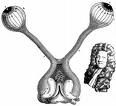






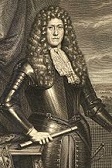


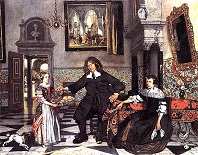
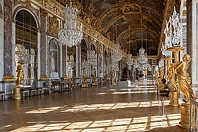

1678 On Jan. 2 the Hamburg State Opera opens in Hamburg (until 1730) with a Biblical Singspiel by Johann Theile (1646-1724), becoming the first public opera house in Germany. On Jan. 18 the Battle of Warksow near Gustow on Rugen Island is a V for 3.5K Swedish over an allied army of 4,670 Danes and a few hundred troops from Brandenburg, after which the entire allied force is captured or force to swear allegiance to the Swedish flag; Frederick William, the Great Elector of Brandenburg occupies Swedish Pomeriania and takes Stralsund from the Swedes; meanwhile Swedish-held Bohus Fortress is sieged unsuccessfully. On Jan. 27 the first fire engine co. in British Am. goes into service. On Apr. 5 after the Hungarian Kurucs accept Transylvanian chancellor Count Mihaly Teleki (1634-90) as their leader and the Ottoman sultan gives Transylvanian prince Michael I Apafi leave on the condition that Hungary become part of the Ottoman Empire, Transylvania declares war on the Hapsburgs, with Polish and French backing, telling the people of Hungary to submit to the sultan "with a reasonable mind and sharp eye" (attempt to play both ends against the middle?); too bad, Teleki's army flees at the first sight of Hapsburg troops in Upper Hungary, although an 8K-man Kuruc army occupies Lower Hungary, while the Hungarians look for a new William Wallace, er, leader to emerge and help them throw off the Hapsburg yoke. On May 1 French adm. Count Jean II d'Estrees (1624-1707) runs his whole fleet aground in Curacao. On Aug. 10 after the French army captures Ghent and Ypres in a surprise attack during peace negotations, Holland, Spain, and their allies fold and sign the nimwitted Peace Treaties of Nimwegen (Nijmwegen) (Nimeguen) with Holland (Aug. 10), Spain (Sept. 17), Sweden (Feb. 6, 1679), and Denmark (Sept. 2, 1679), followed by the Peace Treaty of Lund between Denmark and Sweden on Sept. 26, 1679 (Sept. 16 Old Style), and Holland and Sweden on Oct. 12, 1679; the net result is that Holland gets all of its territory back on the condition of remaining neutral, France gets Franche-Comte, Valenciennes, Cambrai (Cambray), the Cambresis, Aire, Poperingen, St. Omer, Ypres, Conde, Bouchain, Maubeuge et al. from Spain; Spain gets Charleroi, Binche, Oudenarde, Ath, Courtray, Limburg, Ghent, Puycerda (in Catalonia) et al. from France; the HRE cedes Freiburg in the Breisgau to France in return for it giving up the right of garrison in Phillippsburg; the religious liberty of Lutherans in French territory is confirmed; the duke of Lorraine is promised his duchy back but refuses to accept the conditions. In Aug. after Louis XIV promises aid, the Great Kuruc Rebellion (ends 1686) in Hungary against the Hapsburgs by Magyars, Slovaks, Ruthenians, and a few Romanians begins, led by Count Imre (Emeric) Thokoly (Tokolyi) (Tekely) (Turk. "goaty") (1657-1705), who occupies all E and C Slovakia, followed by all of Hungary, and kicks out the Haspsburg govt., getting all of the Kuruc troops to join him and declare him their leader. On Sept. 6 the Popish Plot by Roman Catholics to massacre Protestants, burn London, and kill the king is alleged by rabid anti-Roman Catholic Anglican priest Titus Oates (1649-1705) (accused the year before of capital buggery as chaplain of the English naval ship Adventurer) (whose portrait bears a striking resemblance to comedian Jay Leno (1950-)?), who swears before who-killed-judge Sir Edmund Berry Godfrey (b. 1621) that he learned it by posing as a Jesuit; after the judge mysteriously disappears on Oct. 12 then is found strangled and run through with a sword on Oct. 17 on Primrose Hill, the crazies come out, and the Catholic Terror begins, with many leading Catholics put on trial, dozens executed, five Catholic lords sent to the Tower, and all Catholics excluded from both houses of Parliament by the Dec. Papists' Disabling Act (until 1829); on Nov. 5 mobs burn effigies of the pope instead of the usual Guy Fawkes; Charles II's childless wife Catherine of Braganza is accused of plotting to poison him and place her son James on the throne, but the king stands by her and gets her cleared; when James II gets on the throne, he gets Oates convicted of perjury in 1685, imprisoned, and sentenced to an annual pillory at Westminster Hall and other places, where he is whipped while the crowd pelts him with eggs; when William of Orange gets on the throne, he pardons and pensions him in 1689; meanwhile James Butler, 1st duke of Ormonde clamps down on Irish Roman Catholics, but his mildness and moderation causes his old enemies in England to raise a cry against him again. Another Swedish-Russian War begins - like kids having frequent sleepovers? Queen Nur ul Alam of Indonesia dies, and is succeeded by Queen Inayat Zakia (-1688) (until 1688). John Churchill marries Prince Anne's attendant Sarah Jennings (1660-1744), is raised to the peerage, and made a maj.-gen. England prohibits the importation of all French goods (ends 1685); seeing his chance, the Abbott of Lamego in Douro, Portugal invites British travelers to try fortified (with brandy) wine, causing port wine to become a major export. based in the seaport city of Oporto in NW Portugal on the right bank of the Douro River, 170 mi. NE of Lisbon. Edward Randolph returns to England, and his hostile report on the intransigence of Mass. officials causes the Lords of Trade to begin legal proceedings against their colonial charter, which last for six years. Burgundy becomes a province of France (until 1789). Algerian pirates seize 14 ships from the British Am. colonies, one from Mass. and 13 from Va. The first chrysanthemums arrive in Holland from Japan - the spider monkey is indigenous to which? Thomas Britton (1644-1714) introduces and patronizes weekly concerts in Clerkenwell, London (until 1714), carrying on for John Banister, who dies next year. Dutch mapmaker Herman Moll (1654-1732) moves to London, going on to crank out good maps of much of the world. Citizens of the Swiss mountain villages of Fiesch and Fieschertal begin yearly prayers to save it from the advance of the Great Aletsch Glacier; in 2009 they reverse the prayers because of global warming. After it was banned during the Reformation, the town of Coventry, England begins honoring their local 11th cent. streaker Lady Godiva again during Coventry Fair (until 1826, then from 1848-1929). The first crop circle is observed in England, continuing into modern times, concentrated in Wiltshire. Architecture: French Baroque architect Jules Hardouin-Mansart (1646-1708), chief architect for the Palace of Versailles since 1675, who introduced classicism into French Baroque architecture, and popularized but did not invent the dancing-with-the-stars mansard roof begins a remodeling of the main section, with two new north and south wings, along with a 667-yard facade with 17 arcaded windows each with 21 mirrors (357 total), known as the Hall of Mirrors (Galerie des Glaces), the central gallery of the palace; next year French minister Jean Baptiste Colbert orders all French merchants to be examined in bookkeeping and commercial law, and to recoup some of the money lavished on the Versailles Palace project he invests in factories for manufacturing the palace's many elaborate trappings, and appoints Charles Le Brun (1619-90), Louis XIV's favorite artist as dir. of the factories, who begins decorating the ceiling of the Hall of Mirrors (finished 1684). Leipzig begins building the Alte Handelsborse stock exchange (finished 1687). Medevi Brunn on the E shore of Lake Vattern in NW Ostergottland, Sweden is founded, becoming Scandinavia's oldest spa. Science: English physician William Briggs (1650-1704) describes the anatomy of the eye, incl. the papillae of the optic disc, fibers in the retina et al. Italian mathematician Giovanni Ceva (1647-1734) pub. the elegant Ceva's Theorem on the division of sides of a triangle. Dutch London pendulum man Christiaan Huygens (1629-95) formulates the Wave Theory of Light, and discovers light polarization. English brain man John Locke writes about placing kidney bean leaves under his pillow and around his bed to stop bedbugs from biting on his Euro travels. Nonfiction: William Briggs (1650-1704), Ophthalmo-Graphia; first British treatise on the anatomy of the eye. John Eliot (1604-90), The Harmony of the Gospels. Charles du Fresne, Sieur du Cange, Glossarium Mediae et Infimae Latinitatis. Ralph Cudworth (1617-88), The True Intellectual System of the Universe, Wherein All the Reason and Philosophy of Atheism is Confuted and Its Impossibility Demonstrated; attempts to refute Thomas Hobbes using Plato. Henry More (1614-87), Opera Philosophica. Samuel Nowell (1634-88), Abraham in Arms; big hit Puritan sermon. Hendrik van Rheede (1636-91), Hortus Malabaricus (Lat. "Garden of Malabar") (Amsterdam) (12 vols.) (1678-93); trans. by K.S. Manilal pub. in Kerala; compiled by 25 people working for the Dutch East India gov. of Dutch Malabar (1669-76), and edited by 100+ experts, containing descriptions and drawings of 740 medicinal plants there, incl. cannabis and the joys of smoking it. Richard Simon (1638-1712), Histoire critique du Vieux Testament (3 vols.); claims that Moses could not be the author of the Books of Moses, inaugurating the modern era of scientific Bible criticism; too bad, the French royal council orders the first printing of 1.3K destroyed; "a mass of impieties and a rampart of free-thinking (libertinage)" (Jacques Benigne Bossuet). Christian Weise (1642-1708), Der Politische Nascher. Art: Bartolome Esteban Murillo (1617-82), The Immaculate Conception (Marshal Soult's copy). Emanuel de Witte (1617-92), Portrait of a Family in an Interior. Plays: Thomas Corneille (1625-1709), Comte d'Essex. Nathaniel Lee (1653-92), Mithridates, King of Pontus. Poetry: Anne Bradstreet (1612-72) Several Poems Compiled with Great Variety of Wit and Learning (posth.); incl. To My Dear and Loving Husband, The Flesh and the Spirit, On the Burning of Her Home, Religious Experience, Contemplation. John Cotton II (1640-99), Verses Upon the Death of Noah Newman. Novels: John Bunyan (1628-88), The Pilgrim's Progress from This World, to That Which is to Come, Pt. 1 (Feb. 18); first English novel?; a super-hit, translated into 200+ languages, never going out of print; uses the Hebrew term "Beulah" (married) to refer to the Promised Land, causing it to become popular as a girl's name - Beulah Ballbreaker? Madame Marie-Madeleine de La Fayette (1634-93), The Princess of Cleves (La Princesse de Clčves) (Mar.); pub. anon.; big hit set in the court of Henry II of France in Oct. 1558-Nov. 1559, becoming the first French historical novel, about 16-y.-o. heiress Mademoiselle de Chartres, who marries the Prince de Cleves then falls for the dashing Duke de Nemours; prototype of the psychological novel. Jean de La Fontaine (1621-95), Fables Choisies, Mises en Vers; "Man is so made that when anything fires his soul impossibilities vanish." Plays: Samuel Butler, Hudibras, Pt. 3; pt. 1 1662; pt. 2 1664. Pierre Corneille (1606-84), Le Comte d'Essex (tragedy). John Dryden (1631-1700), All for Love; or, The World Well Lost (tragedy in blank verse); the story of Antony and Cleopatra; his greatest play?; The Kind Keeper; or, Mr. Limberham; banned for indecency. Thomas Otway (1652-85), Friendship in Fashion. Births: Italian "The Four Seasons" Baroque composer-violinist-priest (redhead) ("the Red Priest") Antonio Lucio Vivaldi (d. 1741) on Mar. 4 in Venice. Italian Baroque architect-engraver Filippo Juvarra (d. 1736) on Mar. 6 in Messina; student of Carlo and Francesco Fontana. English coke smelting inventor Abraham Darby Sr. (d. 1717) on Apr. 14 in Woodsetton (near Sedgley), Staffordshire. Swiss mathematician Jakob Hermann (d. 1733) on July 16. Austrian Hapsburg anti-Jesuit Hungarian king (1687-1711), German king (1690-1711) and HRE (1705-11) Joseph I (d. 1711) on July 26 in Vienna; eldest son of HRE Leopold I (1640-1705) and 3rd wife Eleanora, countess Palatine (1655-1720). French gen. Adrien Maurice, 3rd Duc de Noailles (d. 1766) on Sept. 9; son of Anne Jules, 2nd duc de Noailles (1650-1708). English Tory (Country Party) statesman, orator, and political writer (atheist) Henry St. John (pr. SIN-jin), 1st Viscount Bolingbroke (pr. Bullenbrook) (d. 1751) on Sept. 16 in Lydiard Tregoze, Wiltshire; educated at Eton College, and Christ Church College, Oxford U. French mathematician Pierre Remond (Rémond) (Raymond) de Montmort (d. 1719) on Oct. 27 in Paris. French scientist Jean-Jacques d'Ortous de Mairan (d. 1771) on Nov. 26 in Beziers. Chinese Qing emperor #5 (#3) (1723-35) Yongzheng (Yinzhen) (d. 1735) on Dec. 13 in Beijing; 11th son of Emperor Kangxi (1654-1722) and Xiaogongren. English "St. Anne" composer William Croft (Crofts) (d. 1727) on Dec. 30 in Nether Ettington, Warwickshire; student of John Blow. Irish-born British playwright George Farquhar (d. 1707). French scientist ("Father of Modern Dentistry") Pierre Fauchard (d. 1761). Deaths: French physician Charles de Lorme (b. 1584) on June 24 in Moulins. Dutch (Flemish) painter Jacob Jordaens (b. 1593) on Oct. 18 in Antwerp. Italian painter Pietro della Vecchia (b. 1603) on Sept. 8 in Venice. German architect Johann Gregor Memhardt (b. 1707) in Berlin. German feminist writer Anna Maria van Schurman (b. 1607) on May 4 (May 14?) in Wieuwerd, Friesland: "Whatever fills the human mind with uncommon and honest delight is fitting for a human woman". French chef Francois Pierre de la Varenne (b. 1615). English poet-satirist Andrew Marvell (b. 1621) on Aug. 16 (OD of opiate medication).





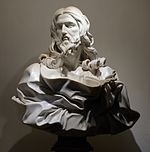
1679 England suffers a minor outbreak of the Black Plague, its last; meanwhile Vienna suffers a terror year. In Jan. Rene-Robert Cavelier, Sieur de La Salle builds Fort Conti at the mouth of the Niagara River on Lake Ontario; on Aug. 7 he launches the 7-cannon 45-ton Le Griffon, which becomes the first full-sized ship to sail across the Great Lakes in a quest for the Northwest Passage, reaching an island in Lake Michigan, where La Salle disembarks with 26 of 32 men, sending the rest back to Niagara with a load of furs, after which it disappears in Green Bay, Wisc.; in Sept. 1679 he sails on a barque with Father Louis Hennepin (1626-1705) to Lake Erie, Lake Huron, and Michillmackinac, discovering Niagara Falls, then sails through the Detroit River to Green Bay, ditching the barque and switching to canoes, paddling down the W shore of Lake Michigan to the mouth of the Miami (St. Joseph) River, building Fort Miami on the shores of Lake Superior near modern-day Duluth, Minn. in Jan. 1680, and leaving on Dec. 3, reaching modern-day South Bend, Ind., then crossing the Kankakee River to the Illinois River, building Fort Crevecoeur near modern-day Peoria, Ill., surviving a mutiny and canoeing down the Mississippi River in 1682, naming Louisiana after Louis XIV and claiming the entire territory for him, then building Fort Saint Louis at Starved Rock on the Illinois River to replace Fort Crevecoeur before leaving for France, returning on July 24, 1684 with a large expedition incl. four ships and 300 colonists, founding Fort Saint Louis on Garcitas Creek in modern-day Victoria, Tex., claiming Texas for France; too bad, while searching for the mouth of the Mississippi River, La Salle is ambushed and killed on Mar. 19, 1687 by Pierre Duhaunt in modern-day Navasota, Tex., after which his fort on the Illinois River is later taken over by John Jacob Astor's fur trading co. On May 26 Ferdinand Maria (b. 1636) dies, and his son Maximilian II Emanuel (1662-1726) becomes Wittelsbach ruler of Bavaria and elector. In May after the Popish Plot, the English Parliament passes the Habeas Corpus Amendment Act ("[I hear] that you have the body"), guaranteeing protection from arbitrary arrest by the writ of habeas corpus, ordering prisoners brought before a judge to explain why they are being held; a prisoner must be indicted in his 1st term of imprisonment, sentenced no later than the 2nd term, and not retried for the same crime if found innocent; it also prohibits "cruel or unusual punishment" after public outrage by fanatical Protestants at the treatment of liar liar pants on fire Titus Oates - it might work if the judge hasn't been bought? On June 1 after dragging turncoat Scottish archbishop of St. Andrews (since 1661) James Sharp (1613-79) from his carriage on Magus Muir and killing him, the Conventiclers and the Covenanters defeat govt. troops at the Battle of Drumclog, then lose the Battle of Bothwell Brig in Lanarkshire on June 22 after Charles II's illegitimate son James, duke of Monmouth (b. 1649) takes command; the Covenanters suffer the Killing Times, with many transported as indentured laborers to the Am. and Caribbean colonies, and 100 Presbyterians martyred (until 1685); to placate moderate Episcopalian Scots who are alarmed at the savagery, Prince James (who was sent to Brussels in the summer to keep him from anti-Catholics in England) is sent to Scotland (until 1682), becoming the last member of the British royal family to visit until the 19th cent.; he fights the remaining Covenanters while rebuilding Holyrood House and Falkland Castle to house his entourage, reviving the Scottish court after a long interval (James VI), and founding the Royal College of Physicians in Edinburgh. On June 29 the Peace of St. Germain-en-Laye is signed between Sweden and Brandenburg after France forces it on the Great Elector, causing him to surrender most of his conquests in Pomerania to Sweden in exchange for East Friesland and a small payment. On Sept. 17 John of Austria (b. 1629) dies, and Mariana (Marie) of Austria returns from exile to act as regent for the retarded childless Charles II of Spain, who marries Marie Louise of Orleans, allowing Queen Mother Marie of Austria to reestablish Hapsburg influence in Madrid. In Sept. after building Fort Conti at the mouth of the Niagara River on Lake Ontario early in the year, then building the 7-gun 45-ton barque Le Griffon, he sails with Father Louis Hennepin (1626-1705) to Lake Erie, Lake Huron, and Michillmackinac, discovering Niagara Falls, then sails through the Detroit River to Green Bay, ditching the barque and switching to canoes, paddling down the W shore of Lake Michigan to the mouth of the Miami (St. Joseph) River, building Fort Miami on the shores of Lake Superior near modern-day Duluth, Minn. in Jan. 1680, and leaving on Dec. 3, reaching modern-day South Bend, Ind., then crossing the Kankakee River to the Illinois River, building Fort Crevecoeur near modern-day Peoria, Ill., surviving a mutiny and canoeing down the Mississippi River in 1682, naming Louisiana after Louis XIV and claiming the entire territory for him, then building Fort Saint Louis at Starved Rock on the Illinois River to replace Fort Crevecoeur before leaving for France, returning on July 24, 1684 with a large expedition incl. four ships and 300 colonists, founding Fort Saint Louis on Garcitas Creek in modern-day Victoria, Tex., claiming Texas for France; too bad, while searching for the mouth of the Mississippi River, La Salle is ambushed and killed on Mar. 19, 1687 by Pierre Duhaunt in modern-day Navasota, Tex.; his fort on the Illinois River is later taken over by John Jacob Astor's fur trading co. William II of Orange regains all the territory lost to France by Holland's prior regime, and resumes trade with them. New Hampshire (N.H.) is separated from Mass. as a special royal province (until 1686). The term "Tories" is first used for followers of James Stuart, duke of York. English buccaneer-explorer William Dampier (1651-1715) begins his first buckin' voyage around the world (ends 1691), featuring two visits to the Bay of Campeche on the Gulf of Mexico, a raid across the Isthmus of Darien in Panama, and more raiding of Spanish settlements in Peru in 1683, switching ships and sailing across the Pacific Ocean to the East Indies incl. Guam, Mindanao, Manila, Poulo Condor, China, the Spice Islands, and New Holland, reaching King Sound in NW Australia on Jan. 5, 1688. Virginia passes the first Slave Code Law, which becomes a model for God Bless America; slaves and their children are bound for life, and written permission from da massah is required to carry arms or leave the master's land - hence, never teach them to read or write? The Man in the Iron Mask (d. 1703) (identical twin brother of Louis XIV?) becomes a prisoner in the Bastille. Dueling is banned in France by royal edict. English royalist antiquary Elias Ashmole (1617-92) founds the Ashmolean Museum in Oxford, largely composed of the Tradescant collection. The London Tea Auction is founded on Leadenhall St. in London, England by the East India Co., moving to Mincing Lane in 1834; it closes on June 29, 1998. Chinese emperor (since 1661) Qing Sheng Zu orders a History of the Ming Dynasty to be compiled by 53 scholars. John Blow resigns as organist of Westminster Abbey (since 1669) in favor of his favorite pupil, 22-y.-o. Henry Purcell (1659-95), who switches to sacred music. The first German coffeehouse opens in Hamburger, er, Hamburg. German chemist Johann Kunckel von Lowenstern (1630-1703) becomes dir. of the glass works in Potsdam. Architecture: Holyrood Palace in Edinburgh (begun 1671) is finished. Inventions: Denis Papin (1647-1712) of France discovers that the boiling point of water depends on atmospheric pressure, and invents the Pressure Cooker, which he calls the Bone Digester, complete with the first automatic safety valve, and demonstrates it for the Royal Society in England, architect Sir Christopher Wren finding the meal so delicious that he requests instructions on how to use it. Science: Paris Observatory dir. Gian Cassini pub. the first Scientific Map of the Moon. Ambrose Godfrey (1660-1741) emigrates from Saxony to England on the recommendation of Johann Becher, becoming an asst. to chemist Robert Boyle, and learning the secret of boiling urine down to make phosphorus, parting with Boyle in 1682 and becoming a phosphorus manufacturer with Boyle's financial help. Robert Hooke initiates a correspondence with Isaac Newton, causing the latter's interest in dynamics to revive, and in Dec. he proves that "all bodies circulating about a centre sweep out areas proportional to the time", and that in "a body revolving in an ellipse... the law of attraction directed to a focus of the ellipse... is inversely as the square of the distance" (Props. 1 and 11 of his "Principia", Bk. I). Gottfried Wilhelm von Leibniz (1646-1716) discovers the Binary Number System; he doesn't pub. his findings until 1701. French physicist-priest Edme (Edmé) Mariotte (1620-84) announces his rediscovery of Boyle's Law (pub. in 1661) - but Edme's Law or Mariotte's Law has no pizzazz? Nonfiction: Anon., Almanach Royal (later "Almanac National"); becomes the #1 almanac in France. Robert Boyle (1627-91), Producibleness of Chymical Principles (appended to the 2nd ed. of The Sceptical Chymist); "For though sometimes I have had occasion to discourse like a Sceptick, yet I am far from being one of that sect; which I take to have been little less prejudicial to natural philosophy, than to divinity itself." Gilbert Burnet, History of the Reformation of the Church of England, Vol. 1. Connaissance des Temps; an almanac pub. by the French govt., later by the Bureau des Longitudes. John Eliot (1604-90), A Brief Answer to a Small Book Written by John Norcot Against Infant-Baptisme. Edmund Halley (1656-1742), Catalogus Stellarum Australium (Catalog of Southern Stars); 341 stars of the Southern Hemisphere as observed from St. Helena, earning him the title "the Southern Tycho" plus election to the Royal Society. John Partridge (1644-1714), Mikropanastron; or, An astrological vade mecum briefly teaching the whole art of astrology. Sir William Petty, A Treatise on Taxes and Contributions. Philip Rohr, De Masticatione Mortuorum (On the Chewing Dead). Abraham a Sancta Clara, Merk's Wien! (Mark It Well); decries the decaying morals in Vienna. Art: Gianlorenzo Bernini (1598-1680), Salvator Mundi; bust of Christ; his last work? Music: Jean-Baptiste Lully (1632-87), Bellerophon (opera); decries the decay of morals in Vienna - he otta know? Alessandro Scarlatti (1660-1725), Gli Equivoci Nell'Amore (first opera) (Rome); L'Errore Innocente (Rome). Johann Theile (1646-1724), Adam and Eve (opera) (Hamburg) (Jan. 2). Plays: The Second Folio of 50 of the plays of Beaumont and Fletcher is pub. posth. John Dryden (1631-1700) and Nathaniel Lee (1653-92), Oedipus (tragedy). Thomas Otway (1652-85), The Soldier's Fortune. Thomas Shadwell (1642-92), The True Widow; prologue by John Dryden (1631-1700), who later becomes his enemy. Christian Weise (1642-1708), Baurischer Machiavellus (comedy). Novels: P'u-Sungling, Liao Chai (short stories). Births: German rationalist philosopher-mathematician ("German spokesman of the Enlightenment") Baron Christian Wolff (Wolfius) (d. 1754) on Jan. 24 in Breslau, Silesia (modern-day Wroclaw, Poland); educated at the U. of Jena. German Roman Catholic prince-archbishop of Salzburg (1727-44) Count Leopold anton Eleutherius von Firmian (b. 1744) on Mar. 11 in Munich. English writer Catharine Trogger Cockburn (pr. like coburn) (d. 1749) on Aug. 16. Anglo-Irish "A Night-Piece on Death" poet-clergyman Thomas Parnell (d. 1718) on Sept. 11 in Dublin; educated at Trinity College, Dublin; friend of Alexander Pope and Jonathan Swift. French garden designer Jean-Baptiste Alexandre Le Blond (d. 1719) in Paris; pupil of Andre Le Notre. English academic Joseph Trapp (d. 1747) in Cherrington, Gloucestershire; educated at New College School, and Wadham College, Oxford U.; first prof. of poetry at Oxford U. (1708). Deaths: Dutch dramatist-poet Joost van den Vondel (b. 1587) on Feb. 5. English "nasty, brutish, and short" philosopher Thomas Hobbes (b. 1588) on Dec. 4 in Derbyshire: "The original of great and lasting societies consisted not in mutual good will men had toward each other, but in the mutual fear they had of each other" - and he was right on 2 out of 3? English-born Am. Puritan fisherman Roger Conant (b. 1592) on Nov. 19 in Salem, Mass.; they build a statue to him, gee wow? English preacher Praise-God Barebone (b. 1598). English-born Am. Pilgrim Mary Chilton (b. 1607) on Apr. 30 in Boston, Mass. Italian flying physiologist Giovanni Borelli (b. 1608) on Dec. 31 in Rome. French churchman Jean de Gondi, Cardinal de Retz (b. 1613) on Aug. 24 in Paris; leaves Memoirs to the Year 1655 (pub. 1717). English "The Christian in Complete Armour" Puritan writer William Gurnall (b. 1616) on Oct. 12. German poet Christian Hofmann von Hofmannswaldau (b. 1617) on Apr. 18 in Breslau. English lexicographer Thomas Blount (b. 1618). French princess Anne Genevieve of Bourbon-Conde, duchess of Longueville (b. 1619) on Apr. 15 in Port-Royal-des-Champs Convent, Paris. Irish soldier-politician-dramatist Roger Boyle, 1st earl of Orrery (b. 1621) on Oct. 16 in County Limerick, Ireland English theologian Matthew Poole (b. 1624) on Oct. 12 in Amsterdam, Netherlands. German aristocrat Johann Friedrich, Duke of Brunswick-Luneburg-Hanover (b. 1625); dies in a Carmelite convent. Dutch painter Jan Steen (b. 1626). Spanish gen. John of Austria the Younger (b. 1629) on Sept. 17. Bavarian elector (1651-79) Ferdinand Maria (b. 1636) on May 26 in Schleissheim Palace, Munich. English physician-chemist-physiologist John Mayow (b. 1640) in Oct. in London.